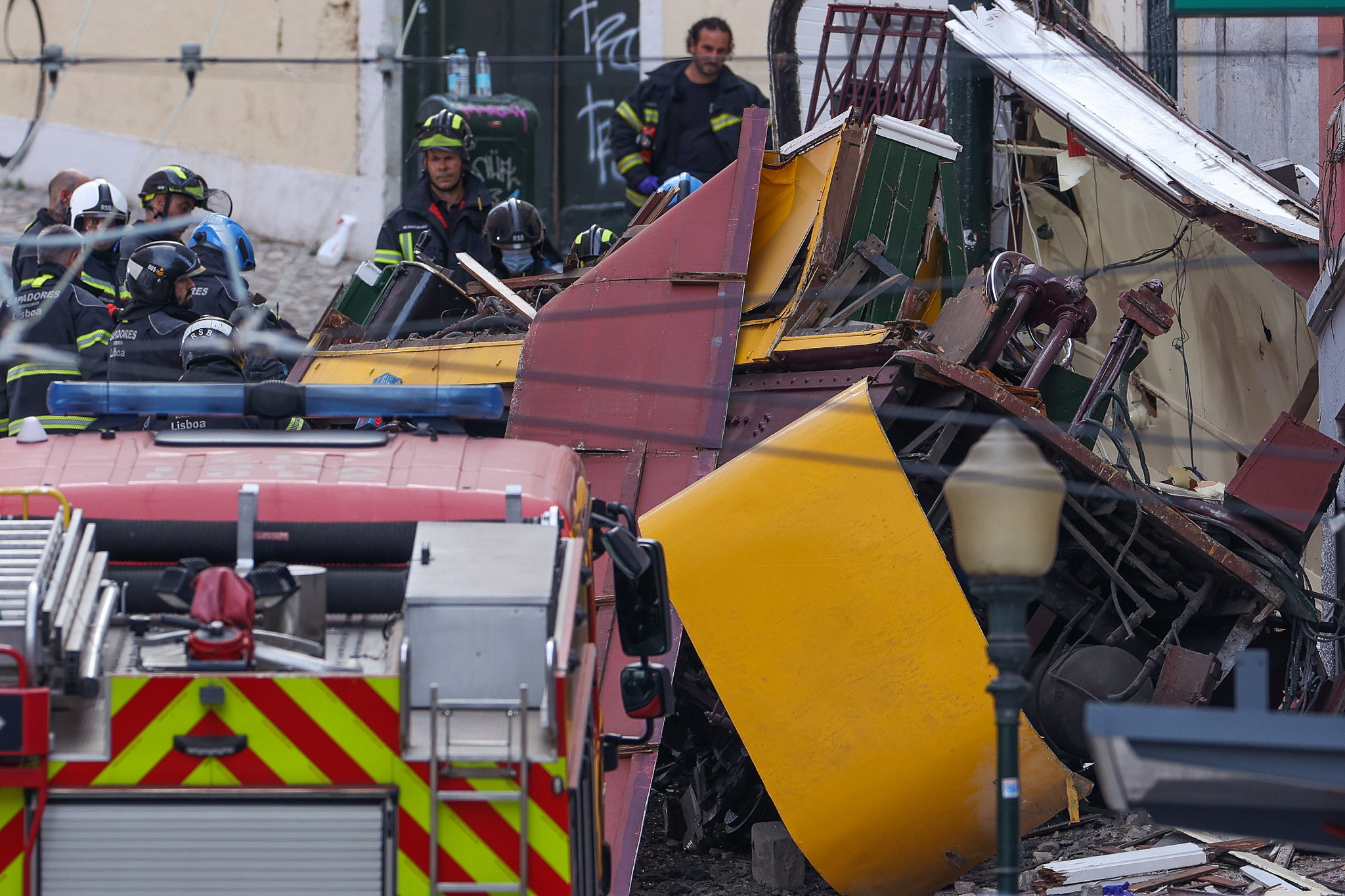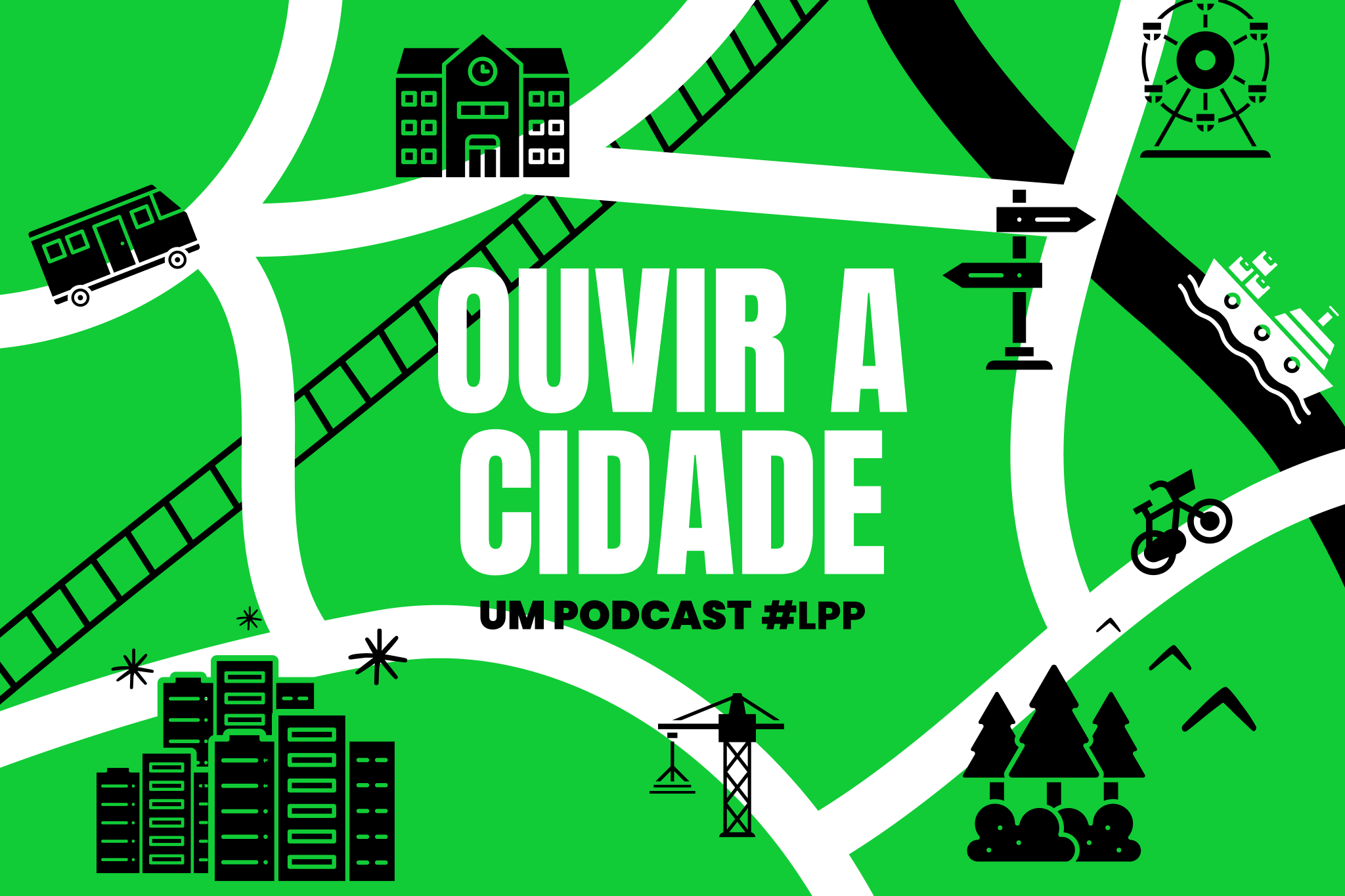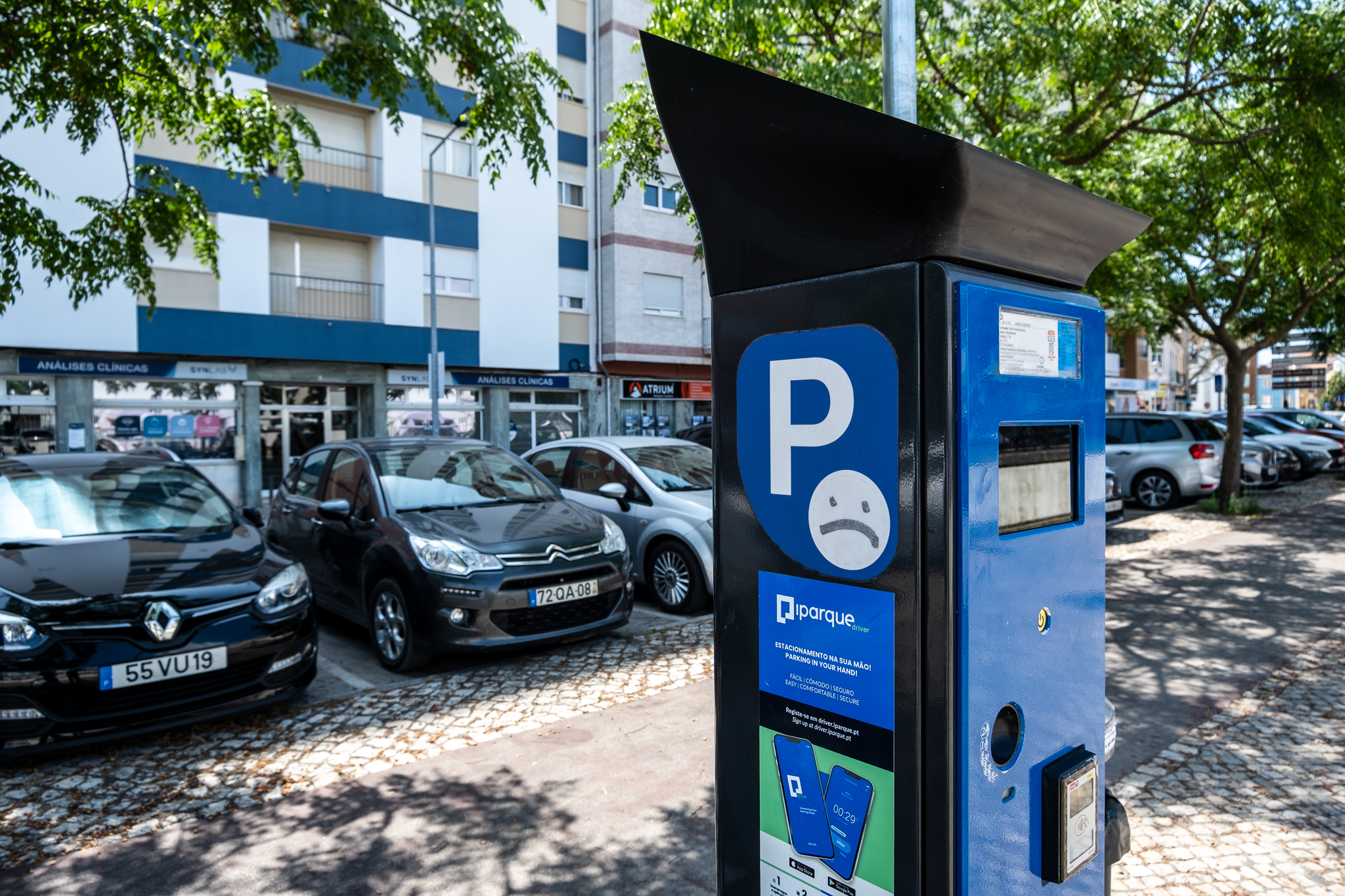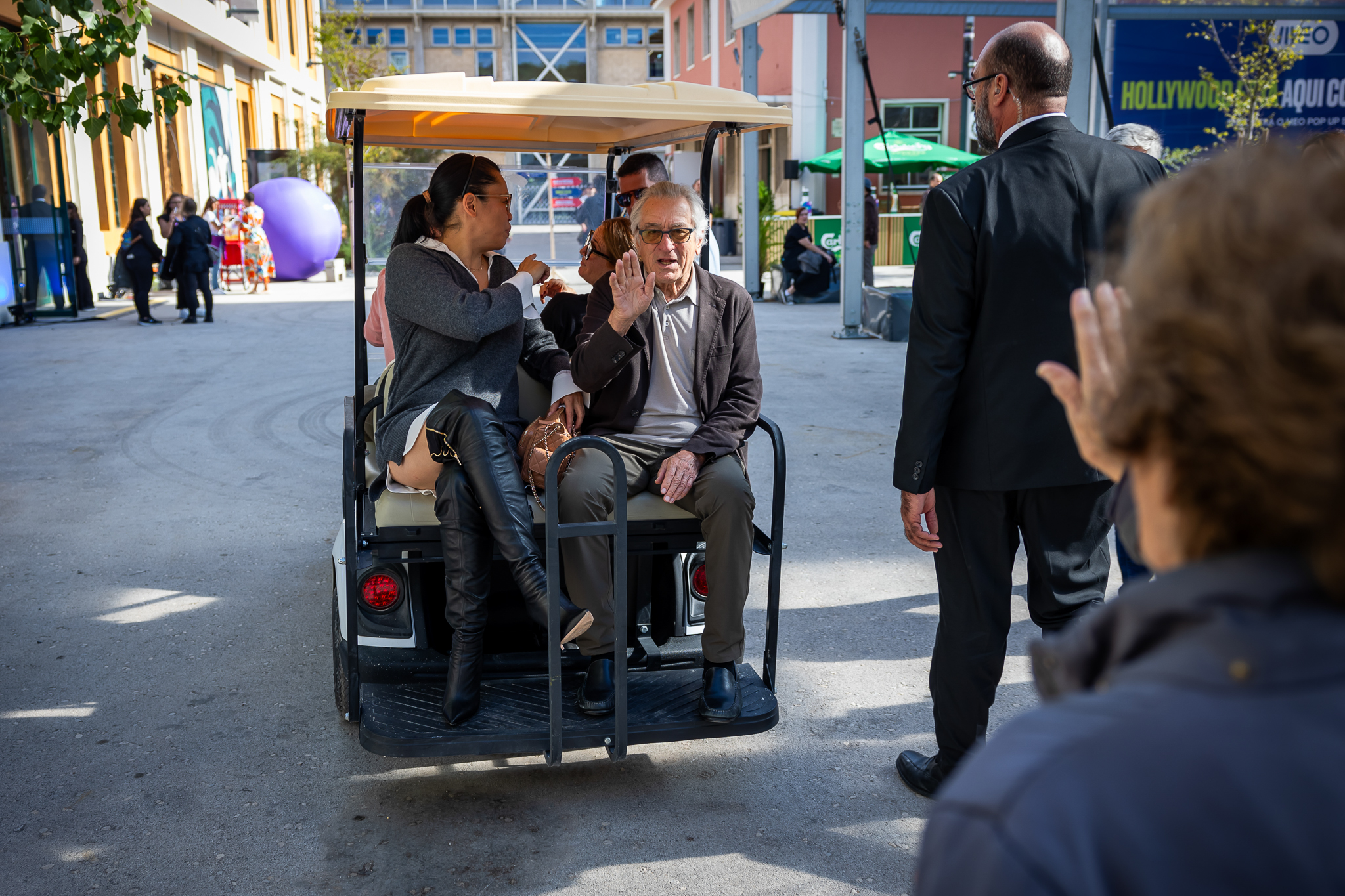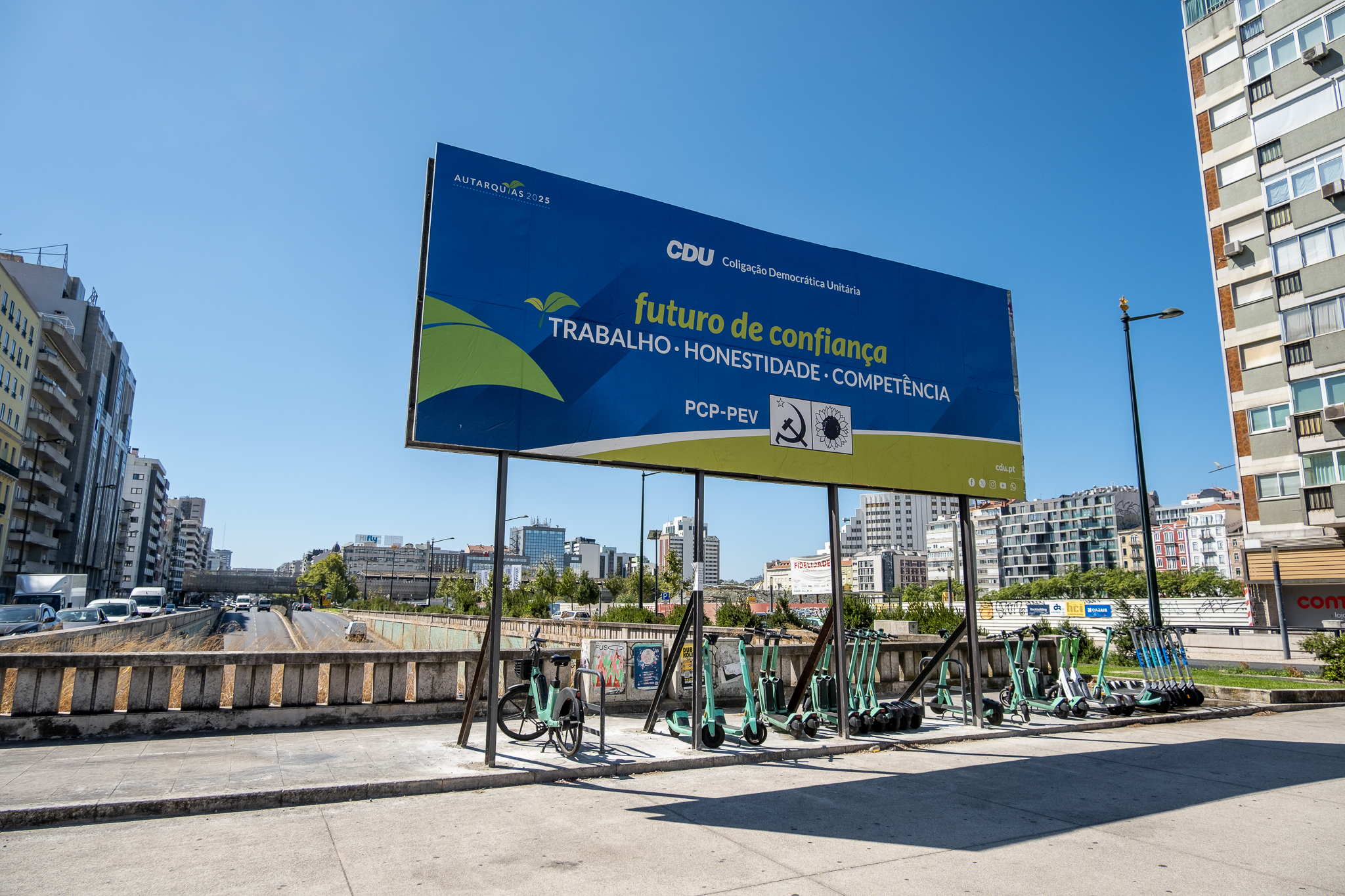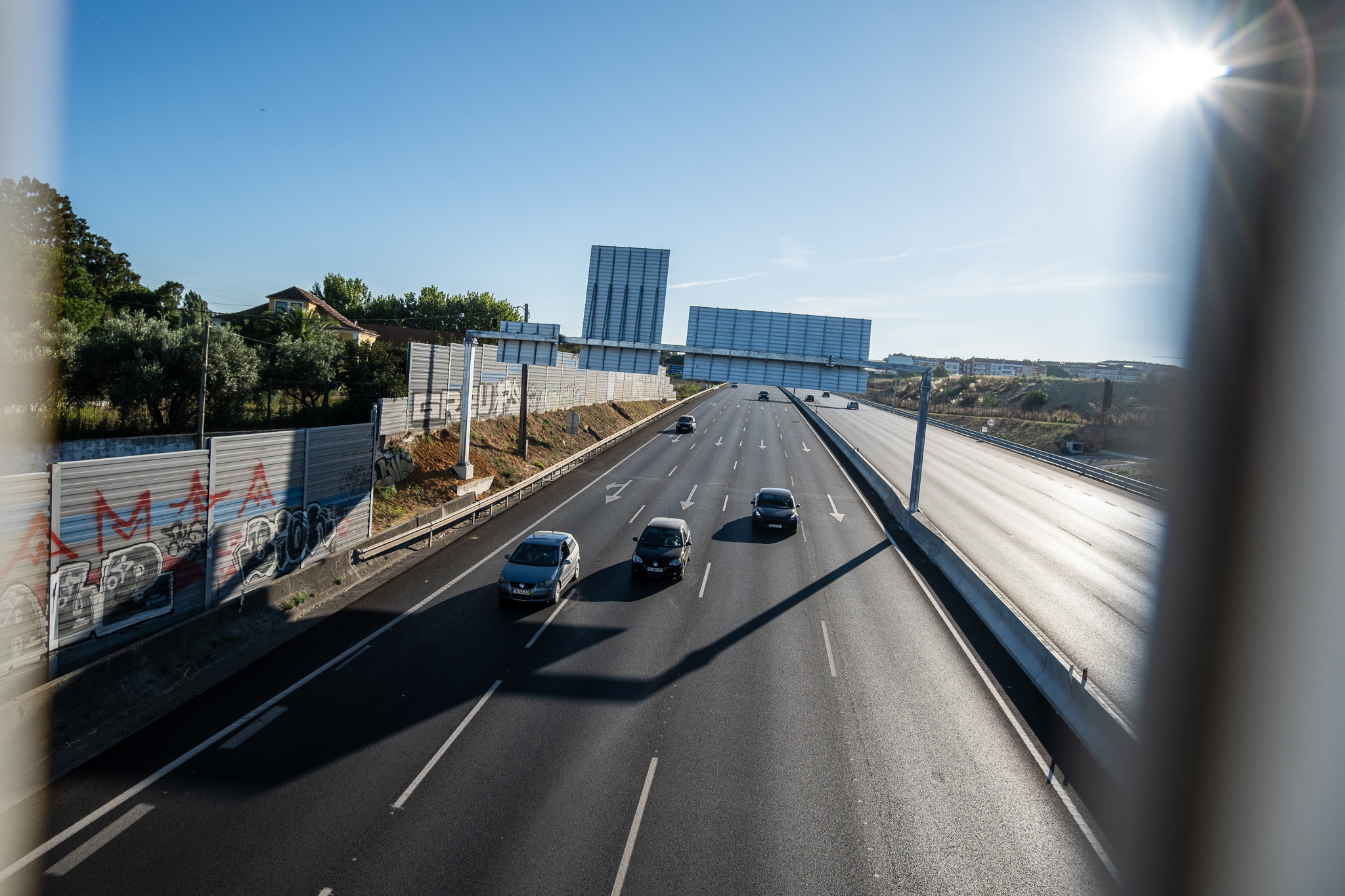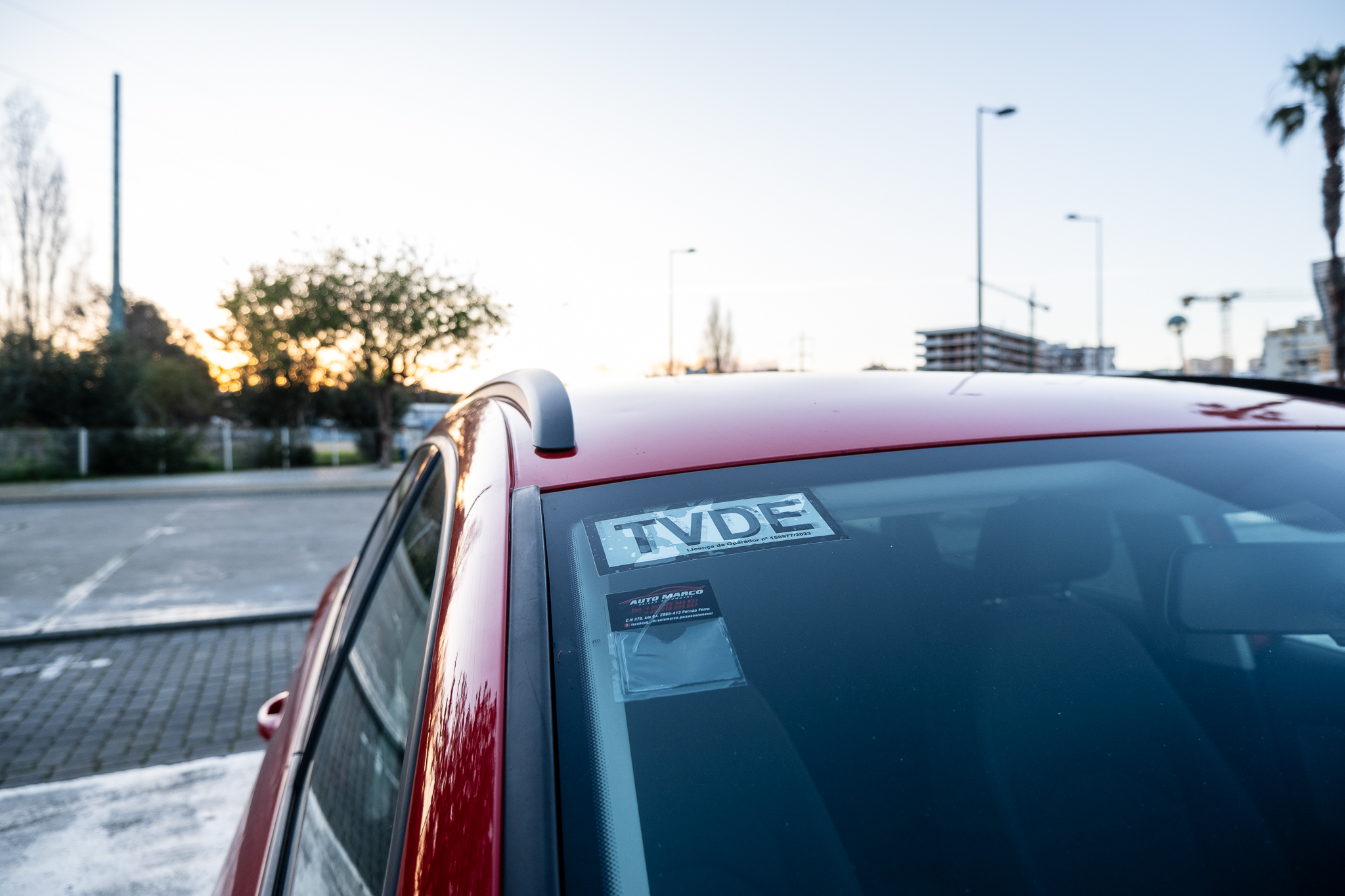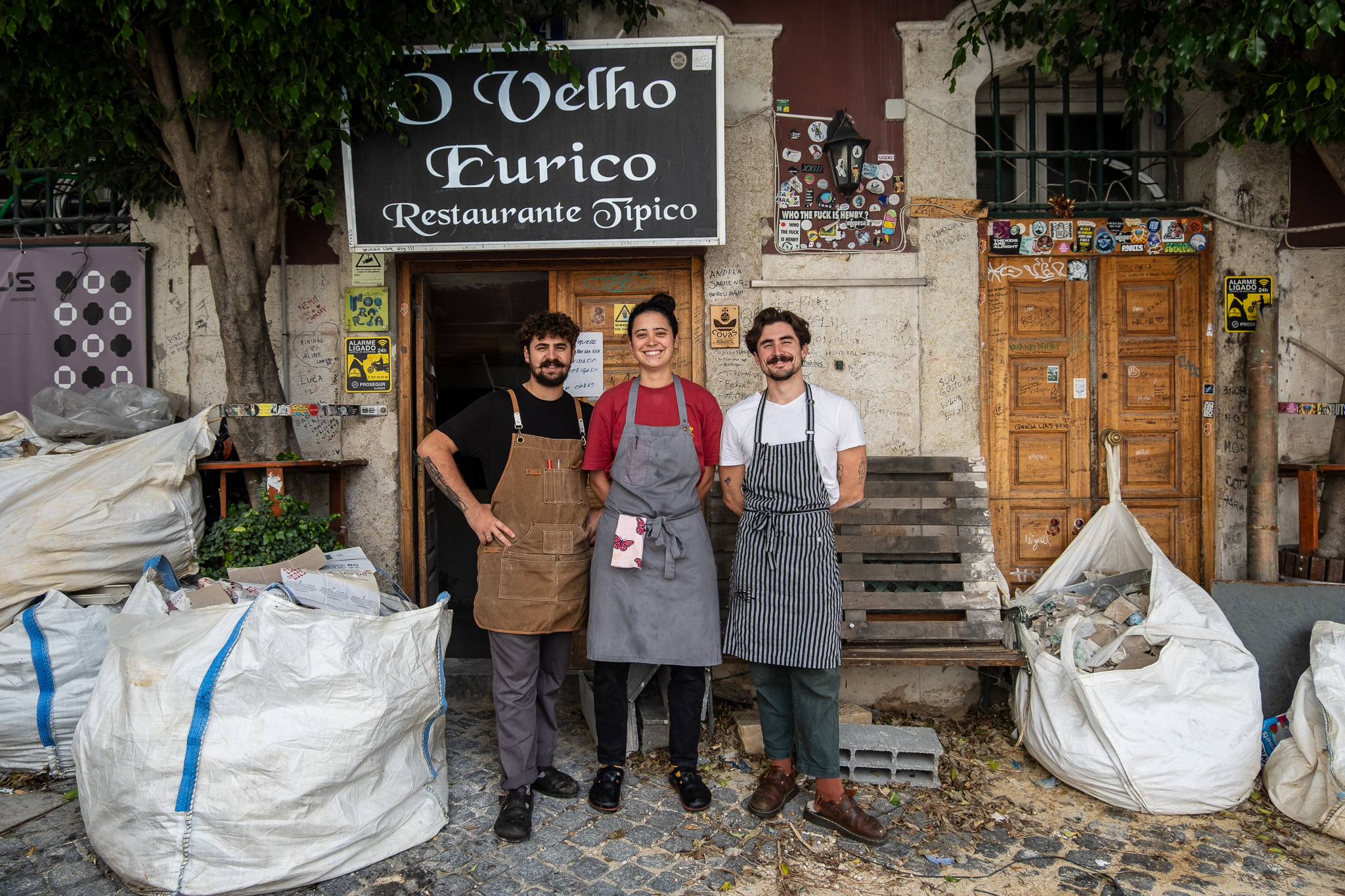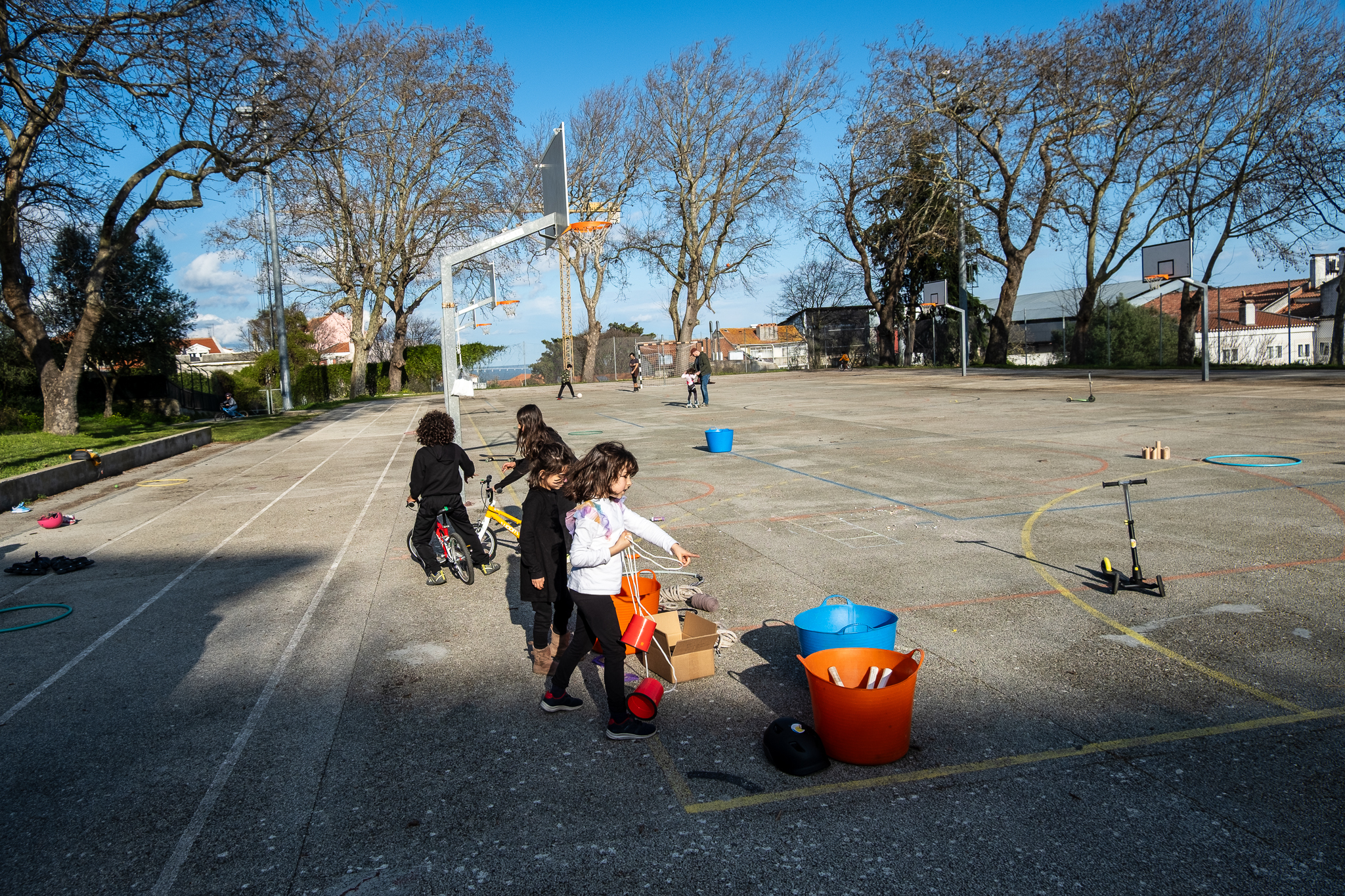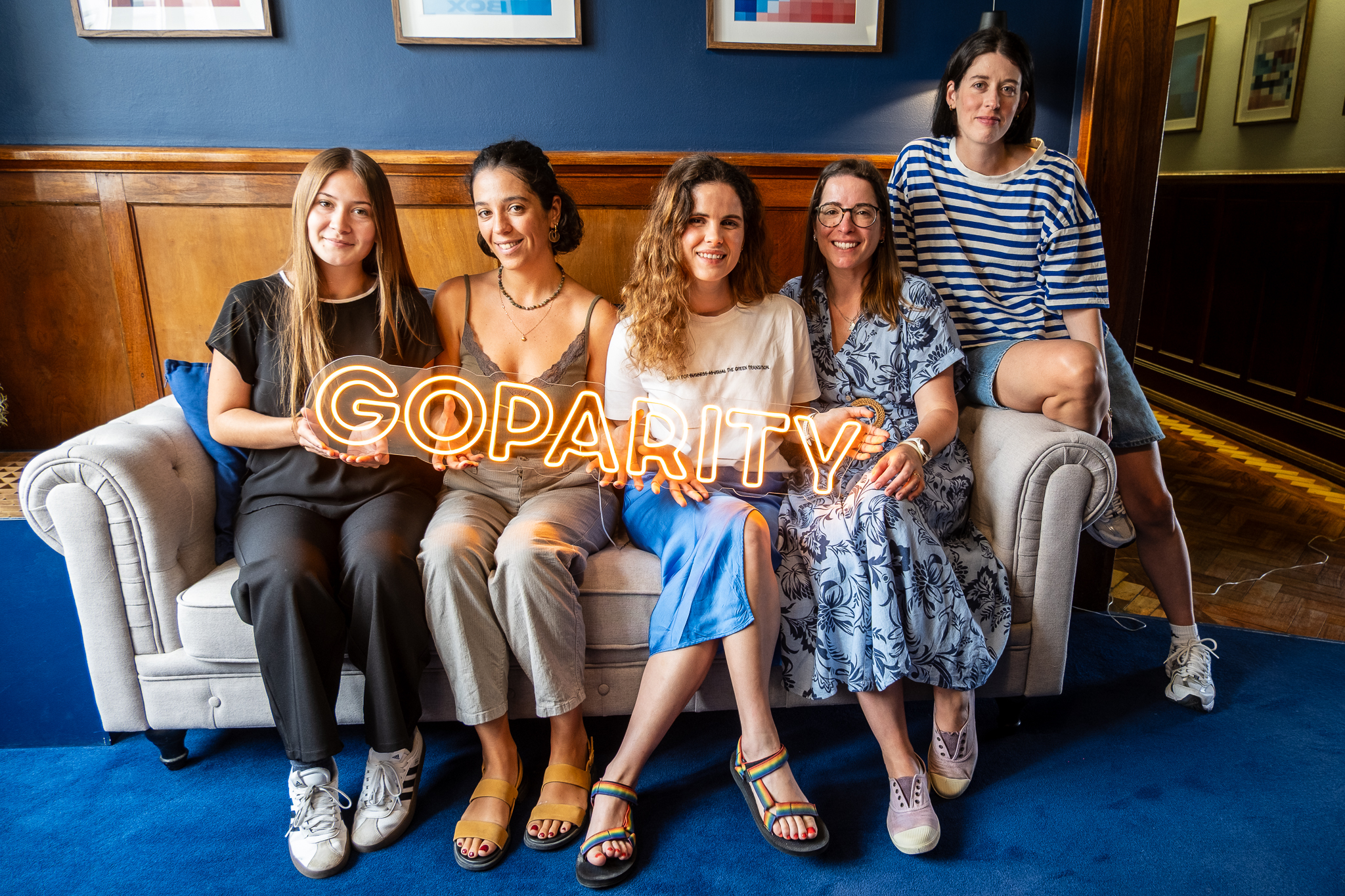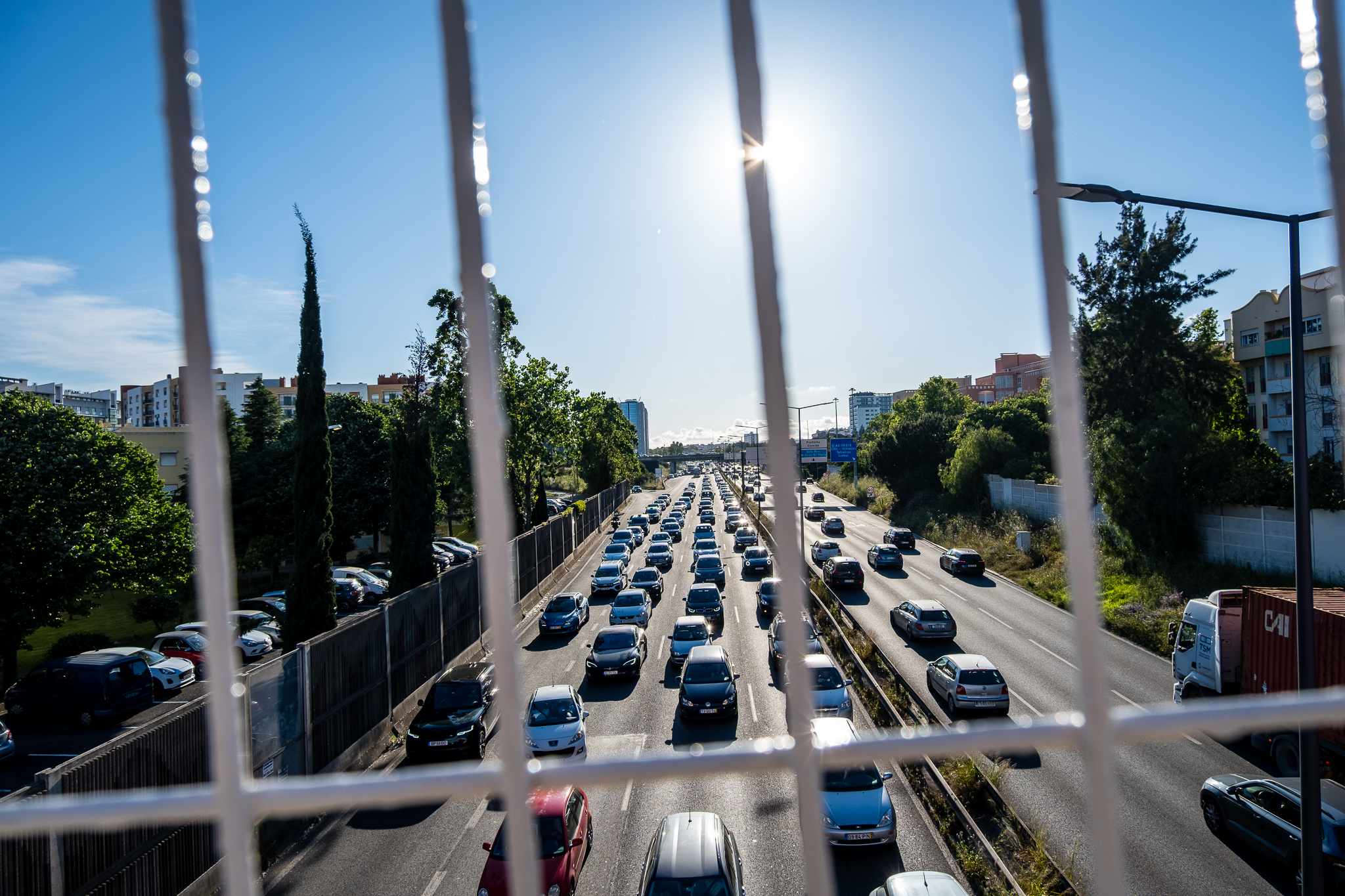Lisbon City Council has started a participatory process for the redevelopment of Largo do Rato. The first initiative was a "world café", a method of discussing ideas that has been cherished by the municipality.

In 2014, Lisbon City Council presented the program A Square in Every Neighborhood, an ambitious public space initiative with the aim of redeveloping a series of squares and plazas throughout the city, giving new centralities to neighborhoods. At the time, 30 priority squares were identified for intervention by 2017. Largo do Rato, "perhaps the most intricate road junction in the city, where several important old streets converge", as described, was one of them. O diagnostic work and preliminary study was made, there was a moment of public participation in 2015, but the work never materialized.
The plan was to extend the southern promenade of Largo do Rato to encourage commercial activity in that area and also create a space for people to stay, to reinstate streetcar 24 (this was done in 2018 without touching the Largo), to improve the pedestrian crossing of the Largo through new pedestrian routes, to reorganize all the road traffic with the introduction of a traffic circle, and to remove the parking lot next to the Church of Nossa Senhora da Conceição to create another pedestrian area and place to stay, among other things.
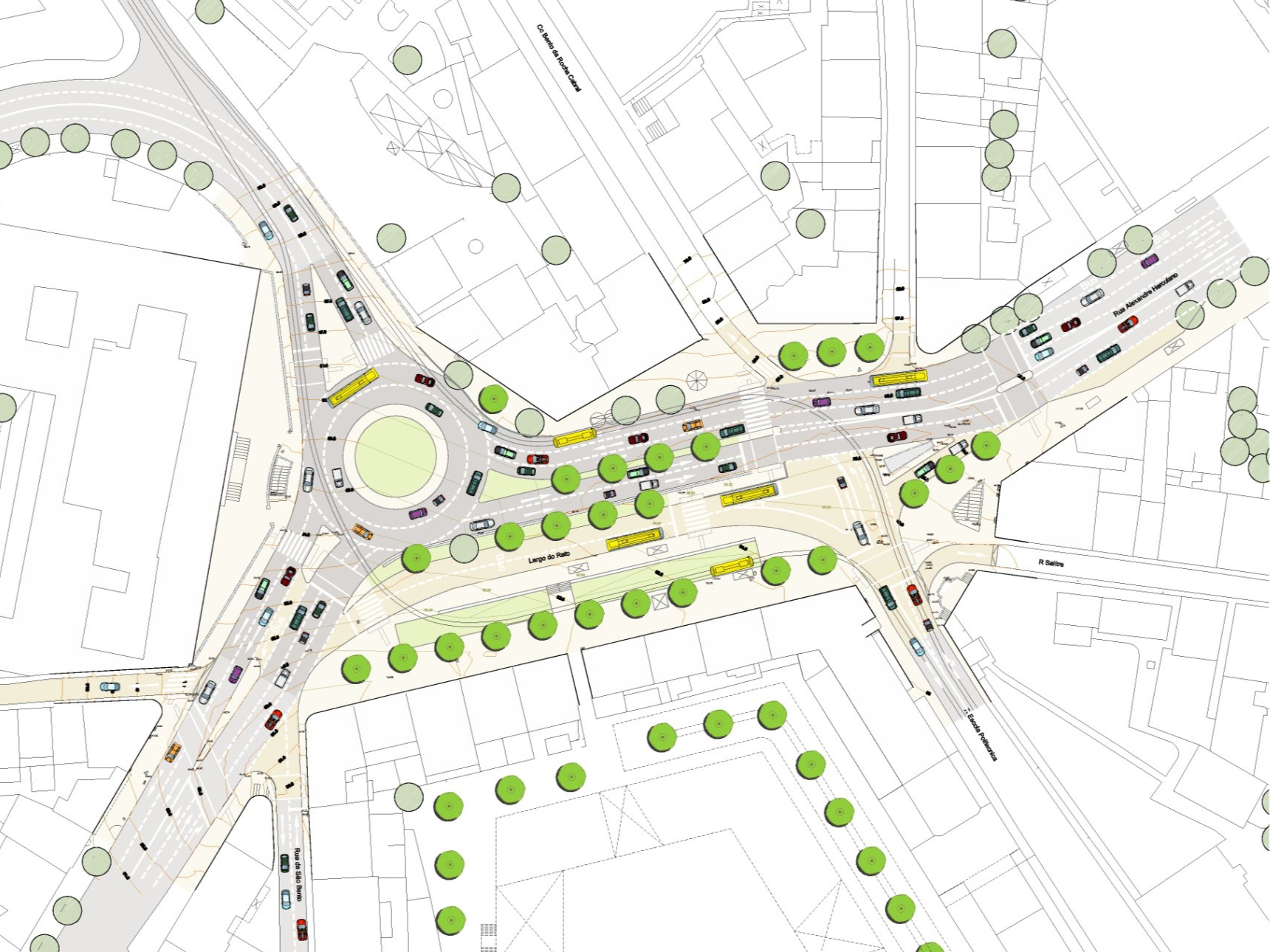
A new job
Despite the work that has been done, Lisbon City Council has now decided to start from scratch. That's why, on October 4, in the late afternoon, two dozen people gathered around four tables for a... coffee talk.
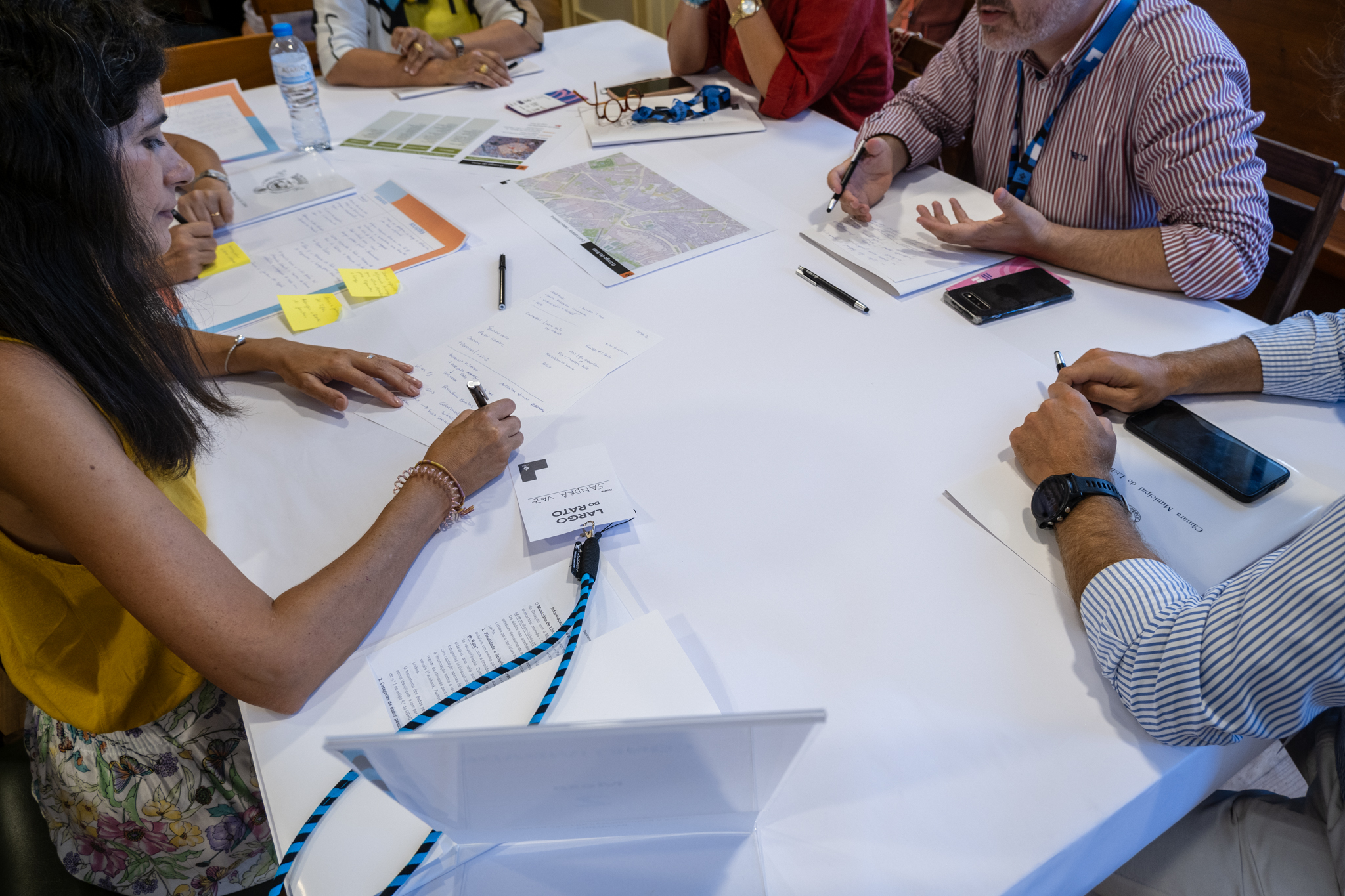
Coffee talk (or world café) is a brainstorming methodology which has recently been adopted by the Lisbon City Council in public participation processes. It was used, for example, in the participatory process on the Almirante Reis axiswhich took place before the summer, and also at the Citizens' Council. Now, the municipality is applying this technique to the participatory process that it decided to initiate for Largo do Rato and should culminate in the preparation of a new requalification projectin the near future. In a "coffee chat"Groups of people discuss a subject at several small tables, each of which can have a more specific theme or objective. This methodology will have been designed by Juanita Brown and David Isaacsin 1995 in the USA.
For about two hours, the participants - who had signed up on the Chamber's website to take part in this initiative - were organized into four groups, spread across four tables; each table had a macro-theme (or pillar) associated with it: Environment, Connectivity, Heritage e Security. The groups rotated through the different tables/themes so that everyone had the opportunity to discuss all the topics.
Four pillars of the Largo do Rato intervention and their objectives
Environment
- health and well-being;
- physical activity;
- access to water;
- green spaces;
- fresh areas;
- noise;
- air quality;
- soil permeability.
Connectivity
- road network;
- transport network;
- pedestrian network;
- transport of goods;
- pedestrian conditions;
- "urban permeability" (the urban/human condition).
Heritage
- history;
- territory;
- the scholar;
- popular;
- cultural heritage;
- built;
- trade;
- unique elements;
- marches to S. Bento.
Security
- road;
- people and property;
- lighting;
- state of conservation of the public space.
"This is the first conversation of several participatory sessions that we want to hold to discuss the Largo do Rato issue, a topic that is not easy due to its complexity and technical constraints"Paula Rebelo, an architect from Lisbon City Council's Public Space Department, explained at the start of the session. "We want to create a robust project for the redevelopment of this square with those who know it best, the people who live here and those who also pass through." As in the case of Almirante Reis, the City Council wants the intervention in Largo do Rato not to focus exclusively on the square itself, but to take into account the entire neighborhood, which includes different parishes and streets that converge in those square meters, such as Rua Alexandre Herculano, Rua da Escola Politécnica, Rua das Amoreiras, Rua de São Bento or Avenida Álvares Cabral.

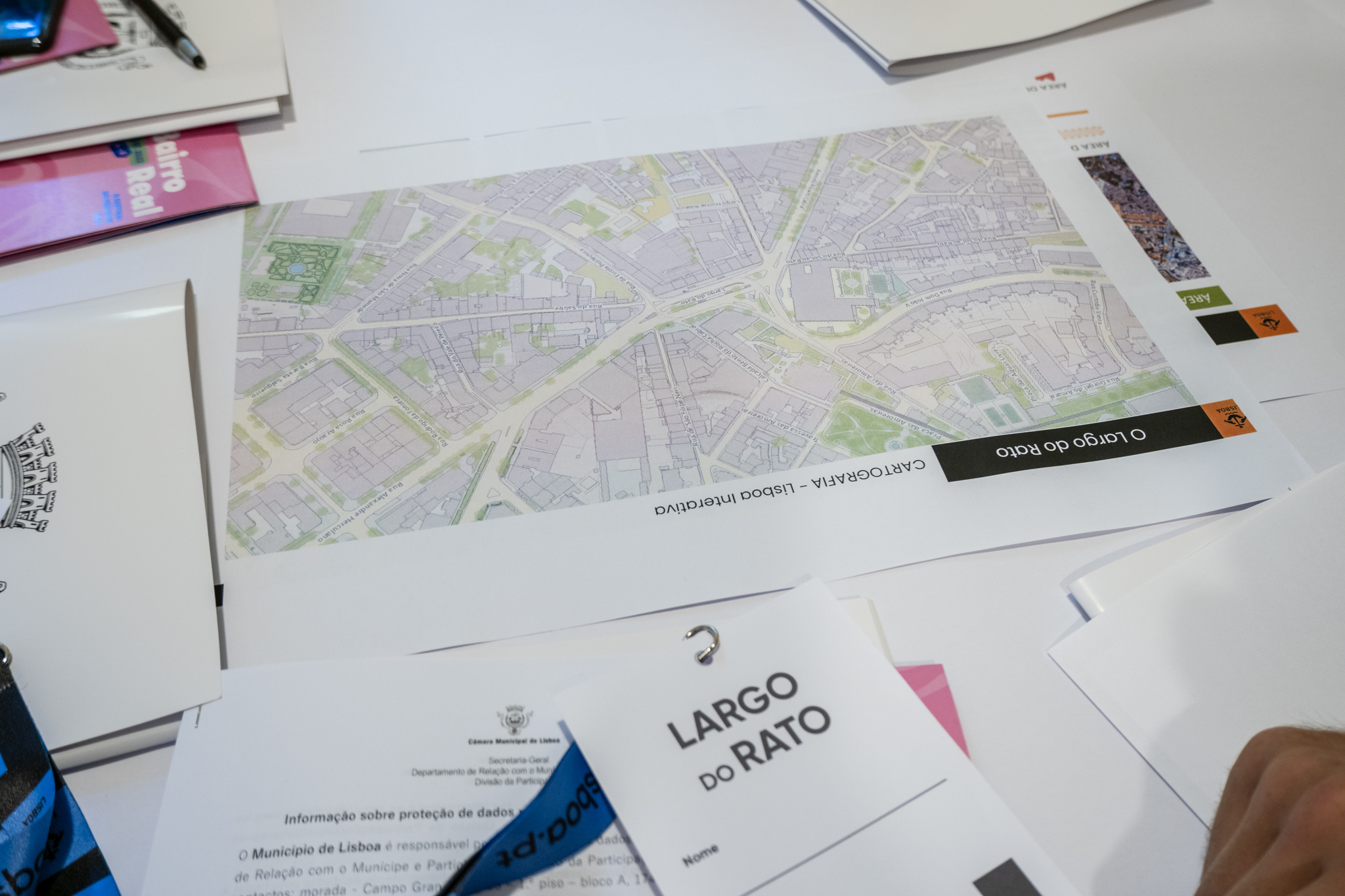
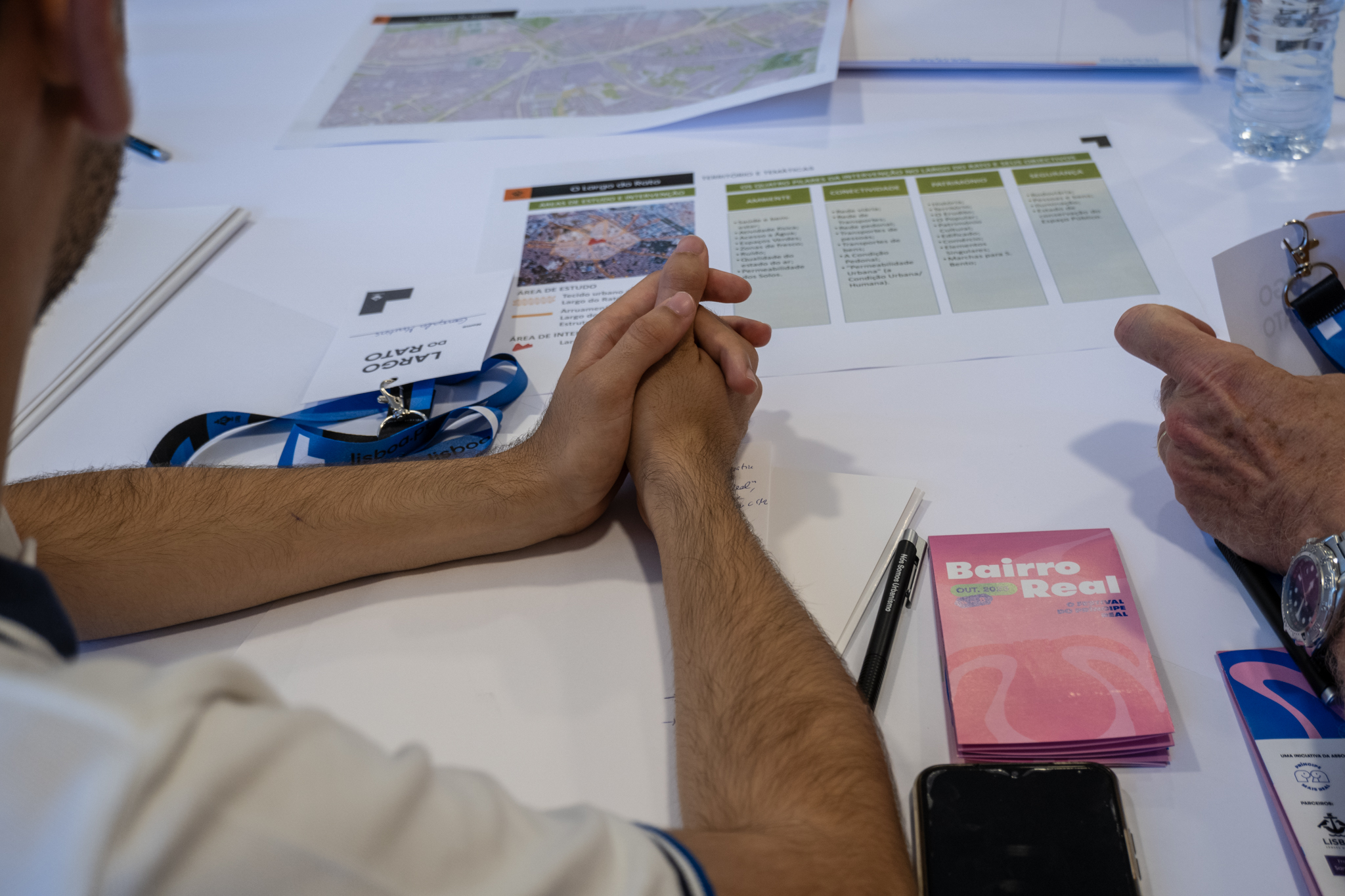
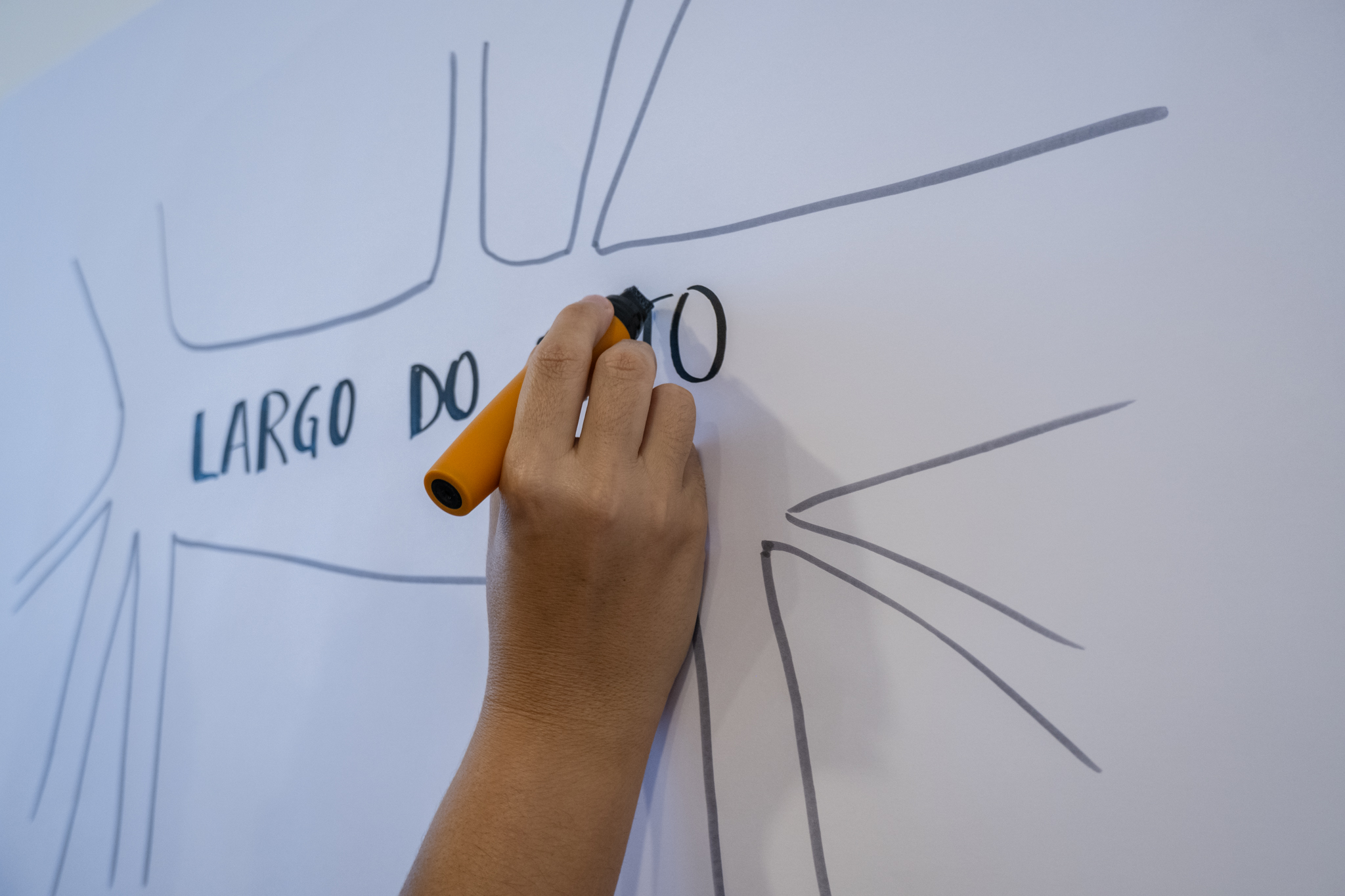
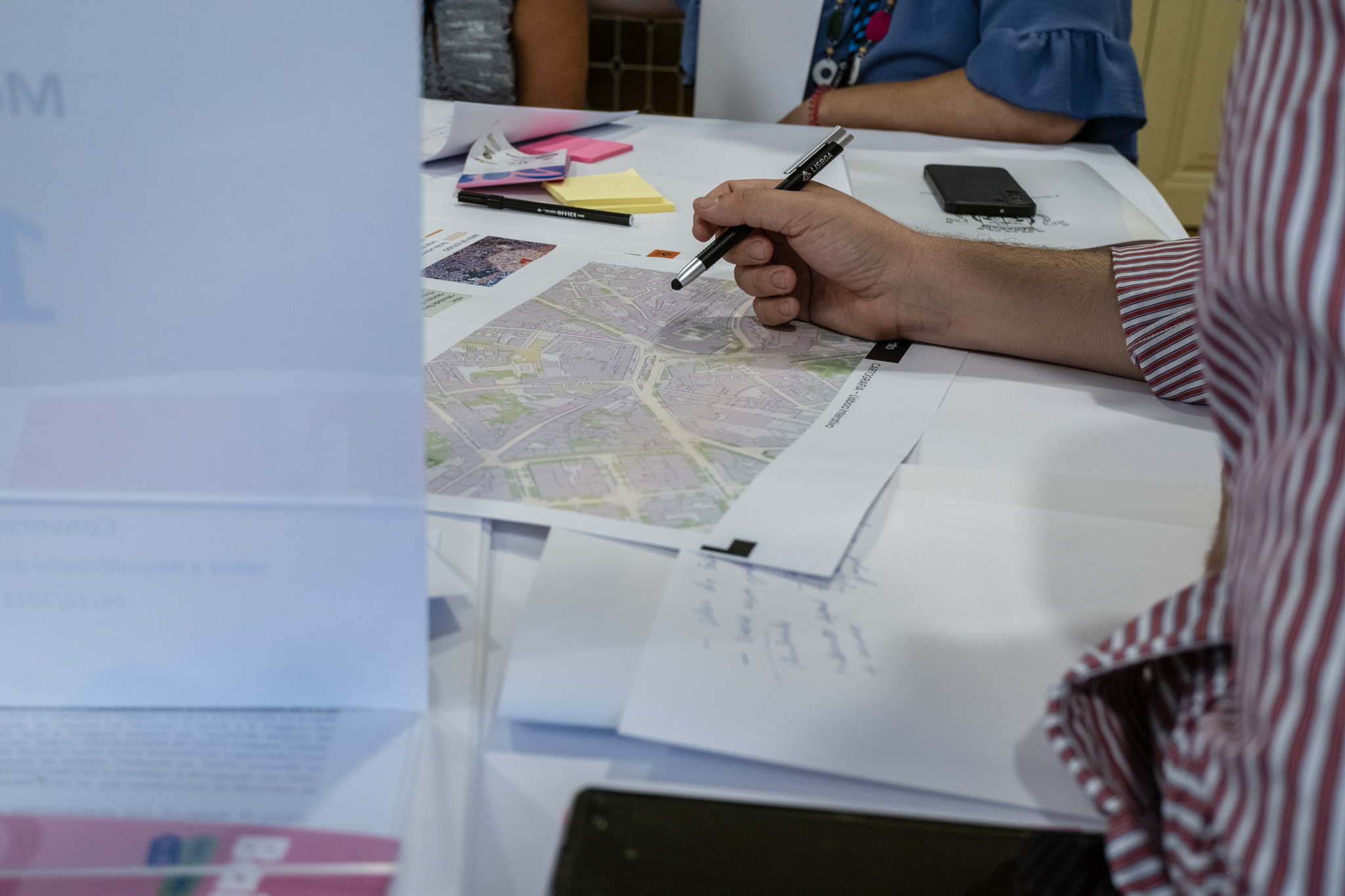
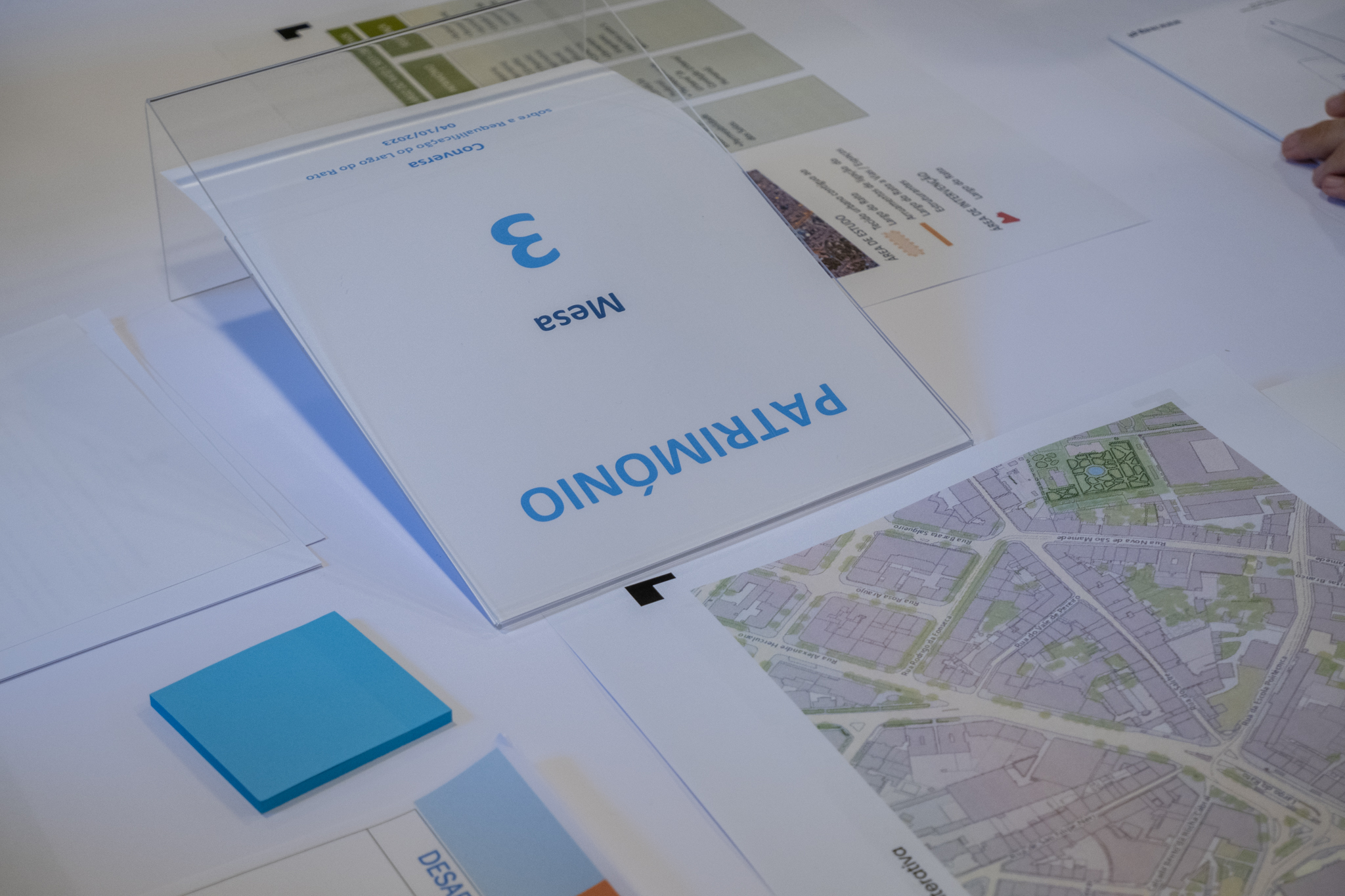
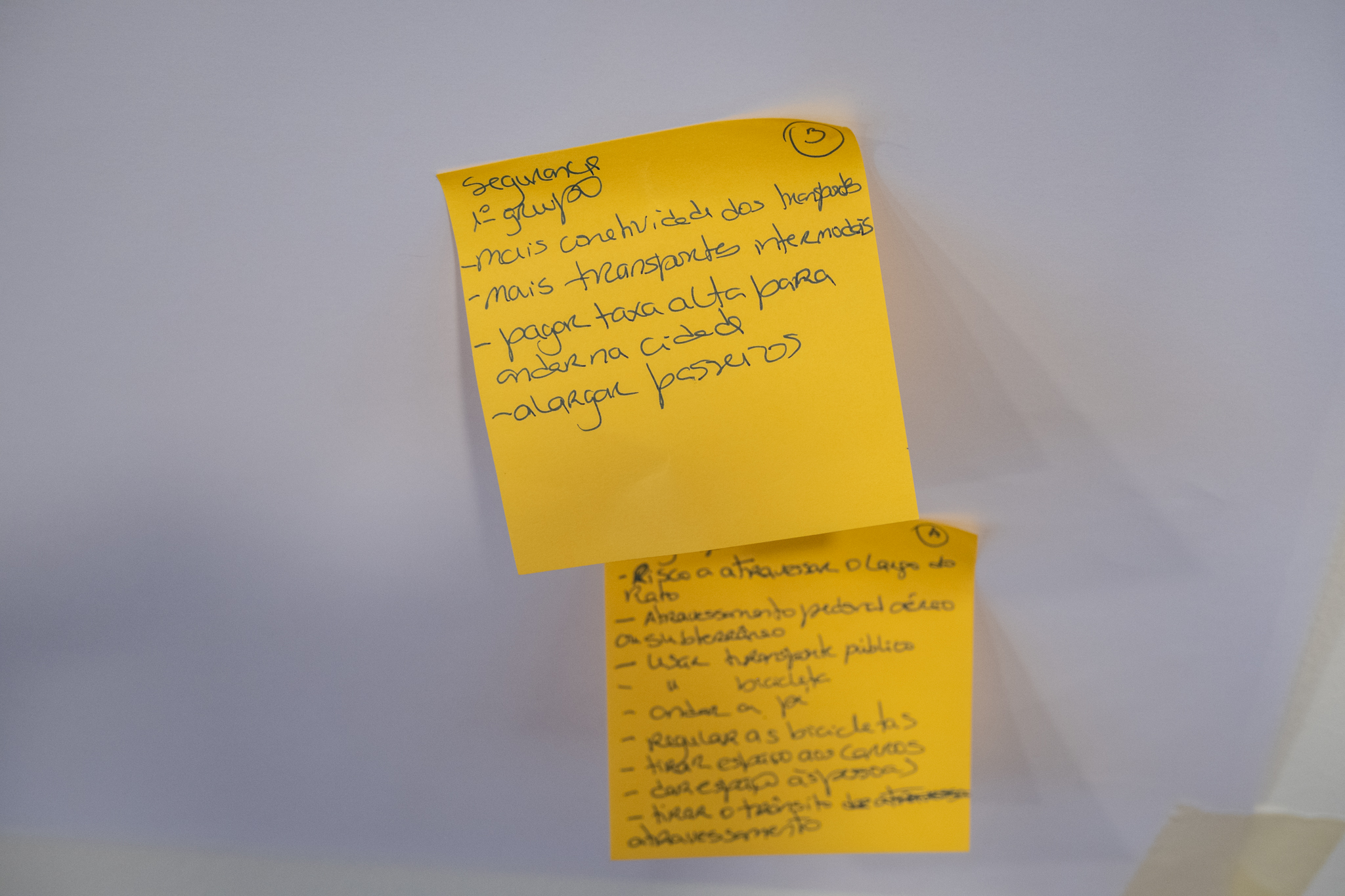
The first coffee talk was promoted by the municipality as part of the Bairro Real festival, an initiative of the Prince + RoyalThis is an association that aims to bring together the people and organizations of Príncipe Real, a territory without formal boundaries. This conversation brought together people of different ages and backgrounds, who were selected from the applications received to represent as diverse a sample as possible. Despite the differences, it was possible to identify consensual ideas - the various tables, for example, seemed unanimous on the need to reduce car traffic and increase the space for people to walk or enjoy the square, but there were differences on how to do thisWhile some have proposed taxing the entry of cars into the city, others have suggested measures to reduce car space as a disincentive to their use.
More people, fewer cars
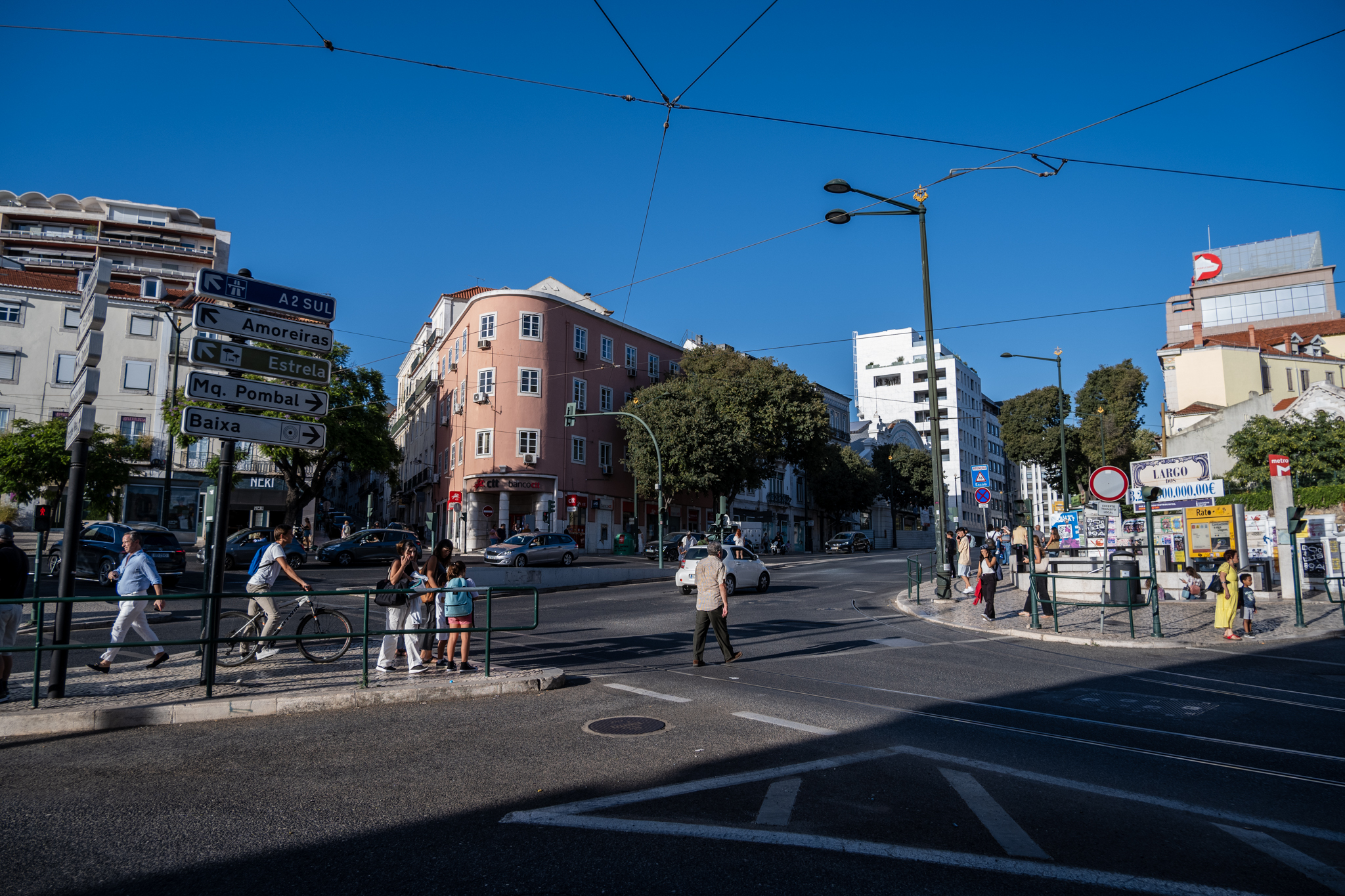
At each table, the conversation was accompanied by technicians from the Lisbon City Council who, after the discussion itself, summarized and presented the participants' ideas, suggestions and proposals to the other groups. At the same time, and throughout the session, the designer and illustrator Manuela GonçalvesThe Mayor summarized the main topics on a visual board: fewer cars, less traffic, better organization of transport, a cycling network, more trees and greater permeability, green corridors, better air quality, removing heavy goods transport, widening sidewalks and making them more comfortable, more preservation of heritage, better lighting, planning the commercial offer, more security and policing, greater cohesion between the square.
Ideas for Largo do Rato
Environment
An expression that stood out at this table: "a Mouse for the people".
- redistribute the different modes of mobility to create space for people;
- more trees for a cooler environment, with more shade and less noise;
- introduction of a cycle path and a GIRA station;
- widen sidewalks, separating them from road traffic with a green structure;
- create a green space in Rato, for example, in place of the "mamarracho";
- integrate the Rat into a green corridor that continues into the neighborhood;
- activate the aqueduct and fountain;
- a pedestrian bridge;
- more bins and fewer bins [these two antagonistic ideas were presented];
- CO2 meters;
- more free transport to have fewer cars in Rato;
- remove the propaganda posters;
- a garden area in the center and on the side of the square.
Connectivity
- expansion of the Rato Market, creating a relationship with the square;
- continuous sidewalks at the intersections of the square with the side streets;
- reduction in car traffic, with streets such as Salitre or Escola Politécnica becoming one-way or even traffic-free;
- establish a traffic/circulation tax like in London;
- change the 2nd and 3rd label policy to resolve the parking policy;
- relocating the bus stops near the Metro exit or to adjacent streets, giving another use to the central area where they are today;
- introduce Rato to the cycling network;
- accessible tours;
- central tree-lined separation on Rua Alexandre Herculado and Rua D. João V;
- eliminating steps at crosswalks, making them accessible.
Heritage
The most difficult topic among the various tables.
- maintain the current image of Largo do Rato and create conditions to appreciate its heritage;
- reduce visual advertising;
- open some gardens that are indoors to the public;
- preserve the moth of the place;
- preserve the views;
- clean the assets;
- try to recover some of the "look of the old Largo do Rato";
- diversify the route of the demonstrations towards São Bento so that they don't all pass through Rato.
Security
A phrase that was highlighted at this table: "I risk my life every day crossing Rato".
- create continuous pedestrian routes rather than several interruptions;
- underground or overhead pedestrian crossing, without detracting from the appearance of the square (choose an attractive design);
- increase the use of public transport and cycling;
- high tax for the circulation of cars;
- reduce the radius of curvature at intersections to slow down cars in these areas;
- create a regulation for scooters or eliminate them;
- sidewalks like those on Avenida da República (smooth sidewalk, no sidewalks);
- less bureaucracy for the rehabilitation of buildings;
- take into account earthquake-resistant construction and train people to know how to act in the event of an earthquake;
- more policing;
- avoid excessive occupation of the space by bars and terraces;
- improving and increasing the lighting, especially at crosswalks and on sidewalks, by using low lamps.
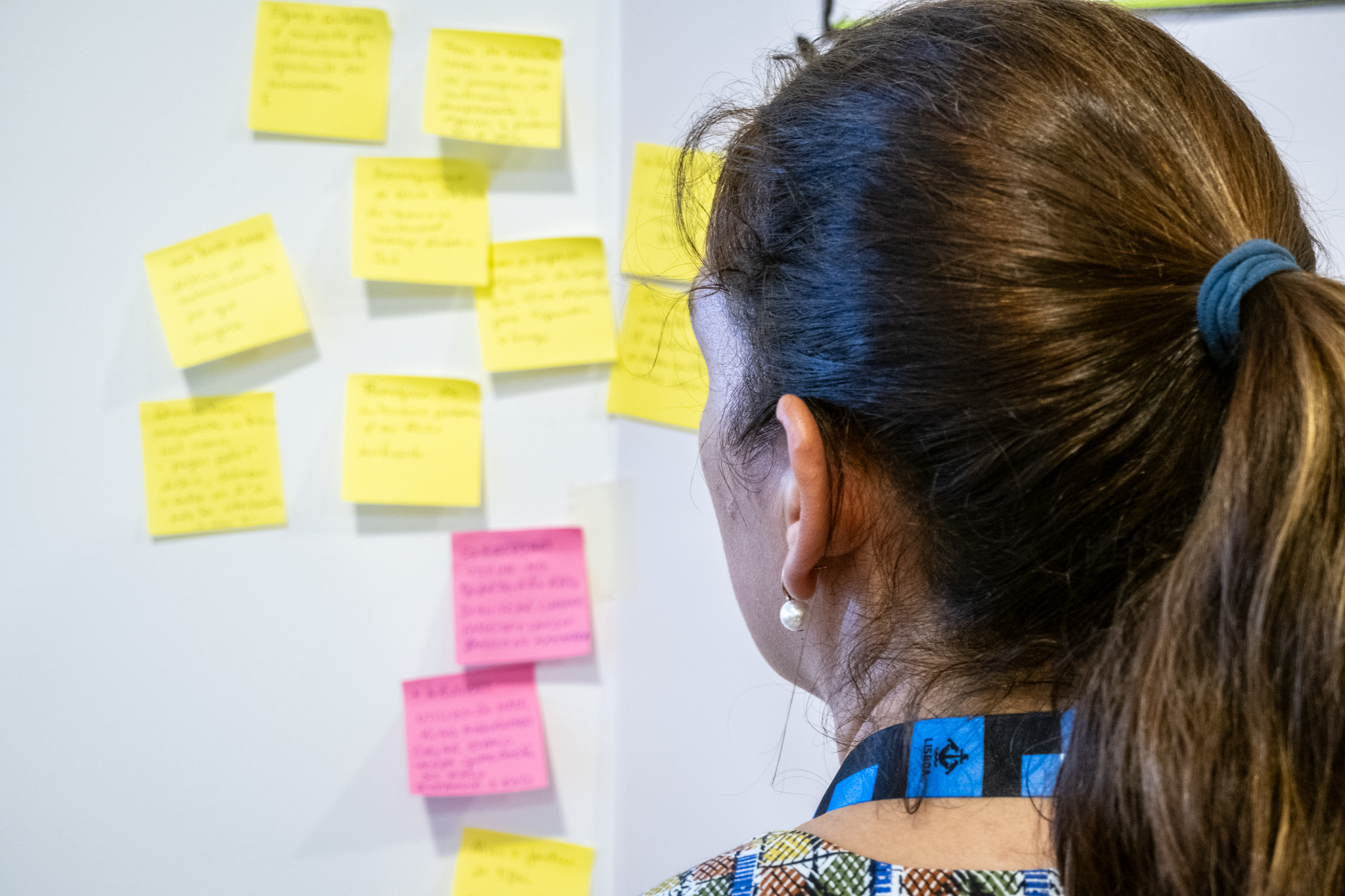
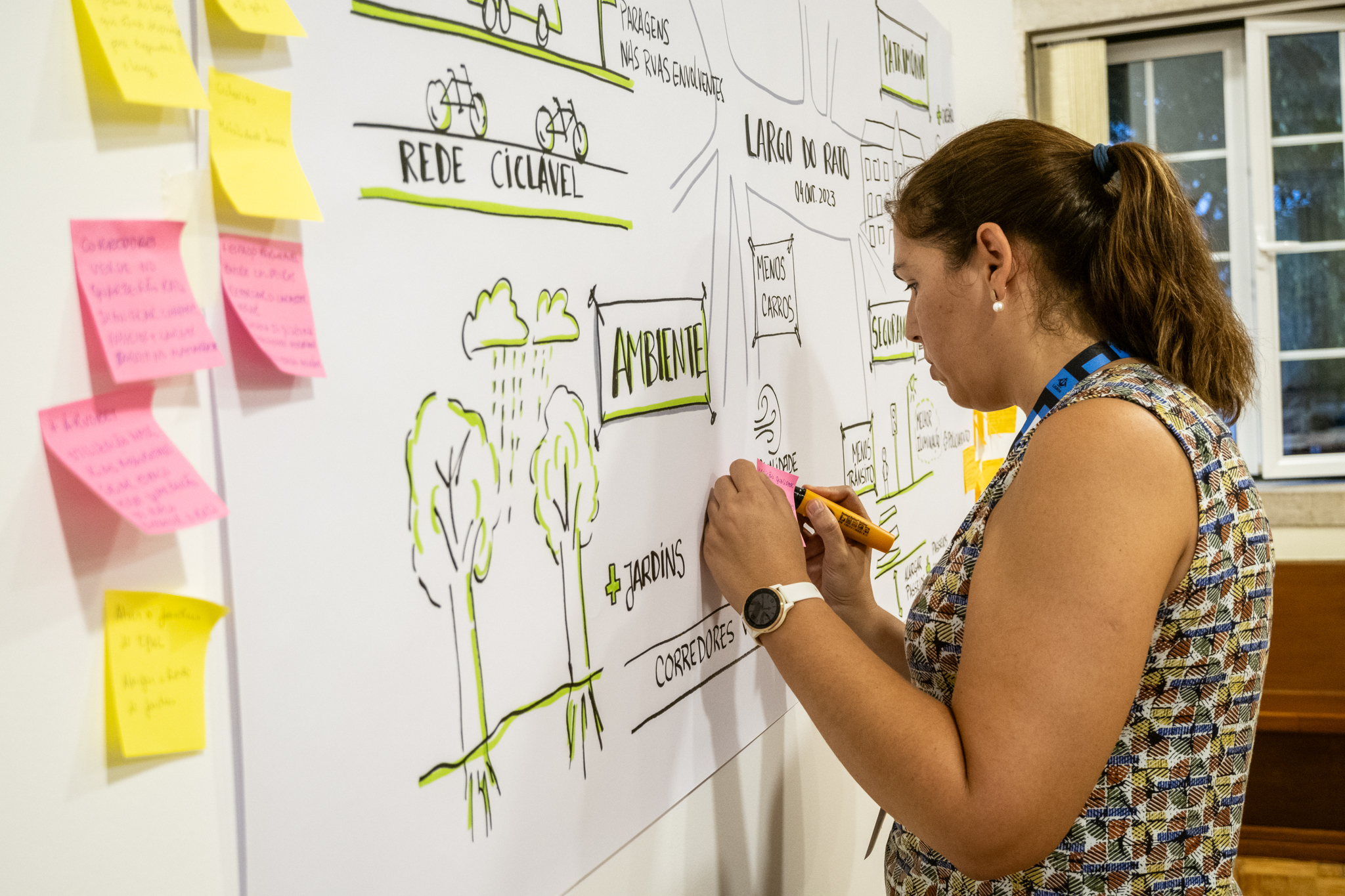
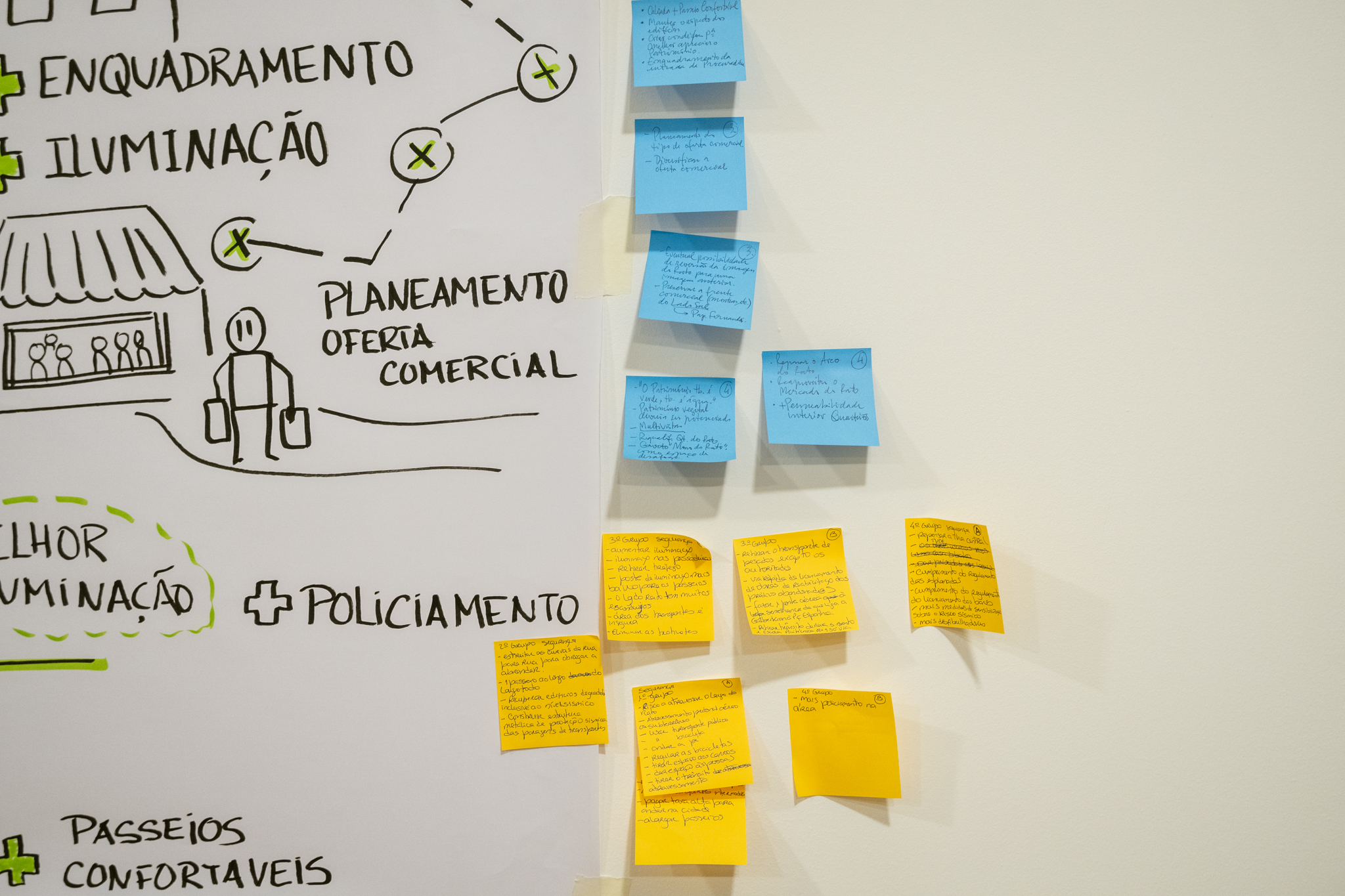
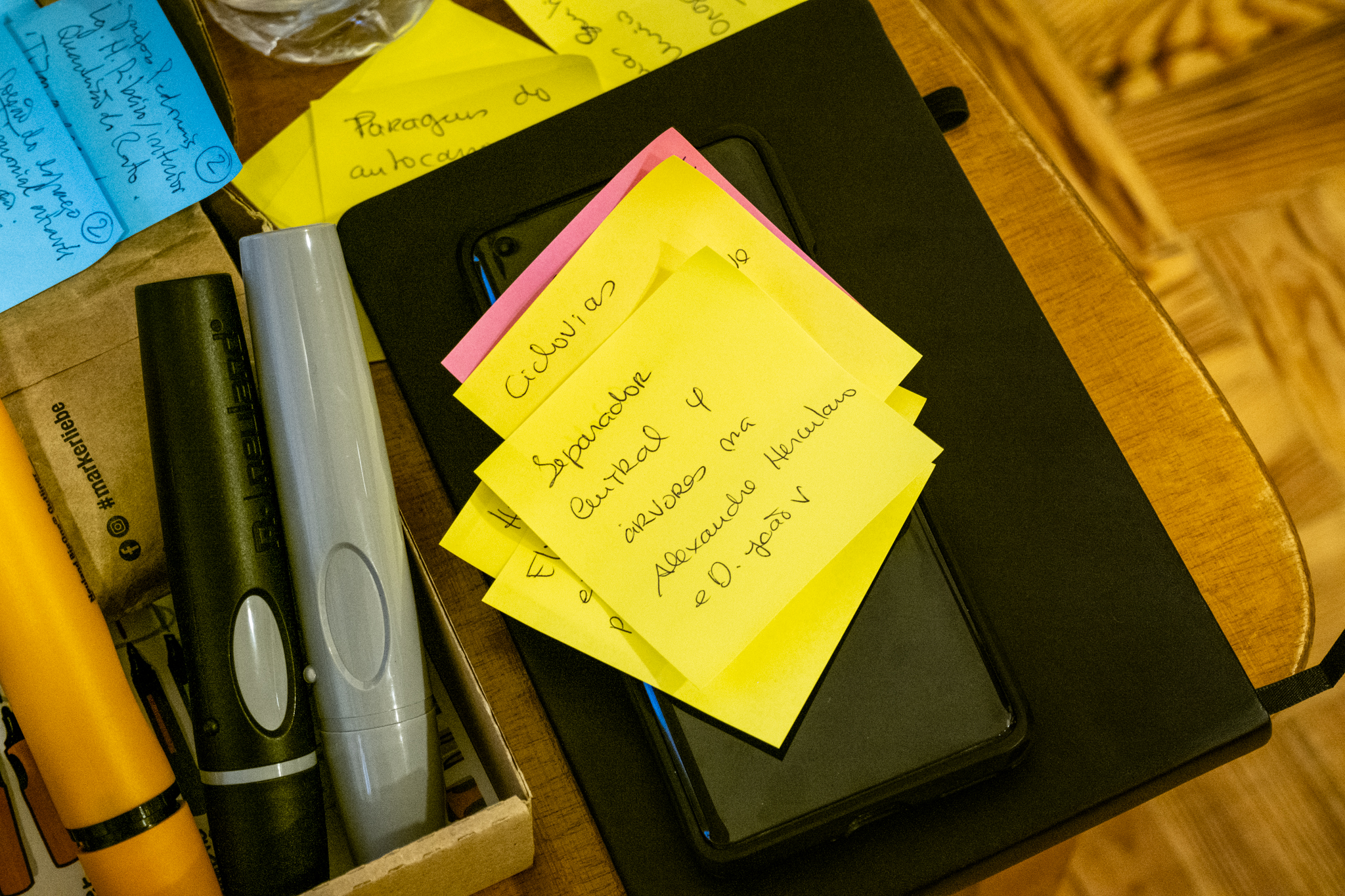
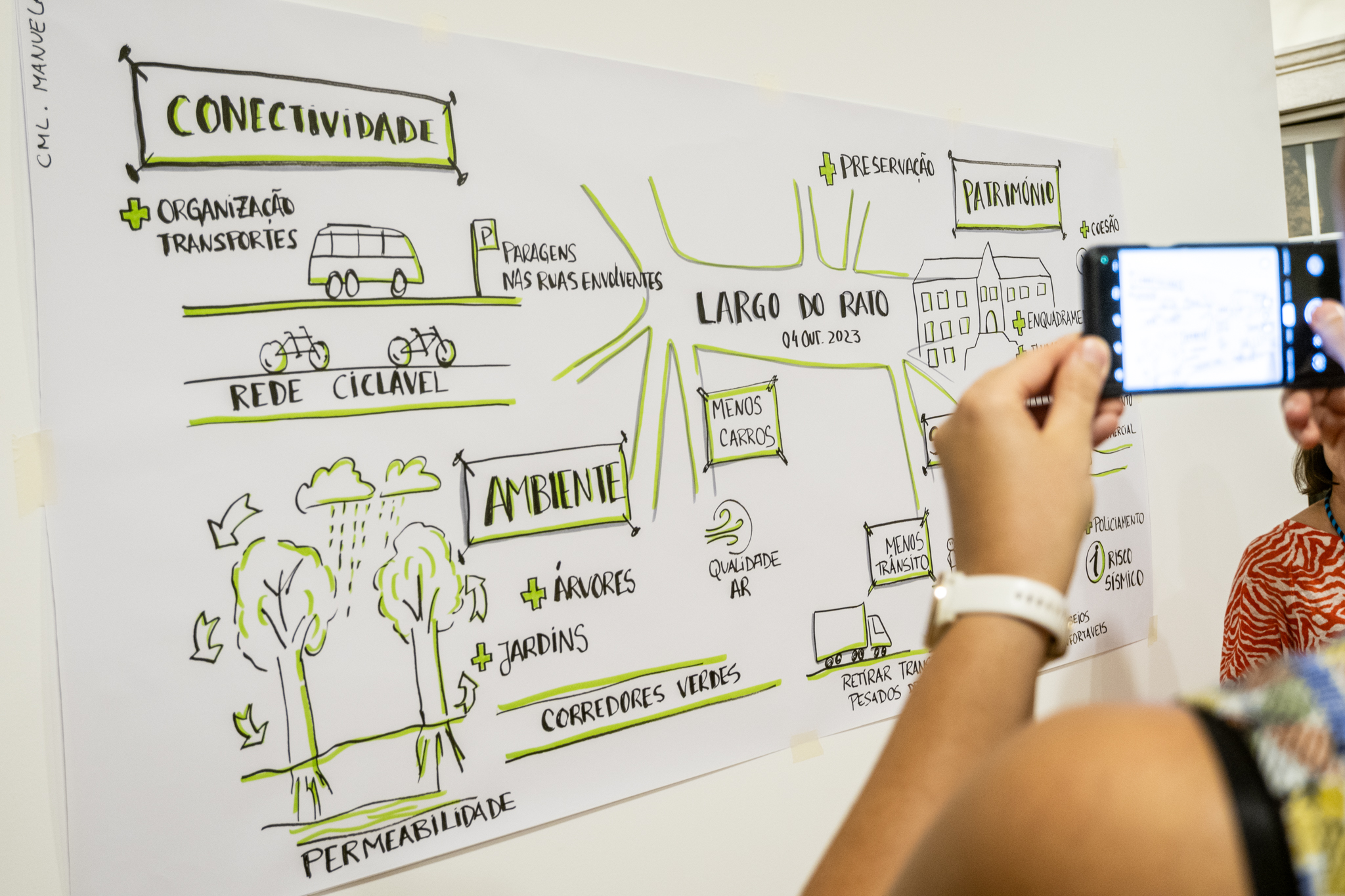
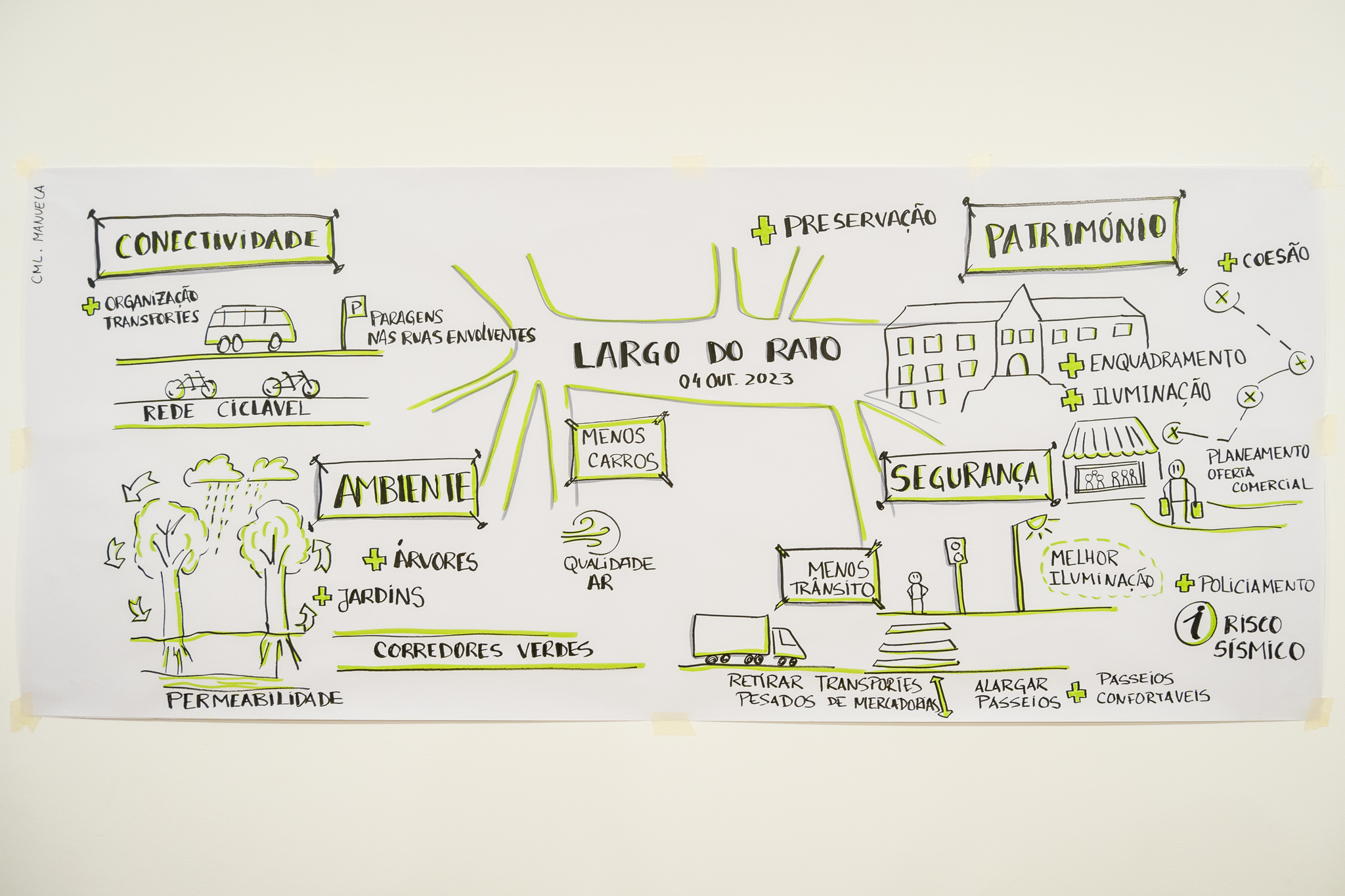
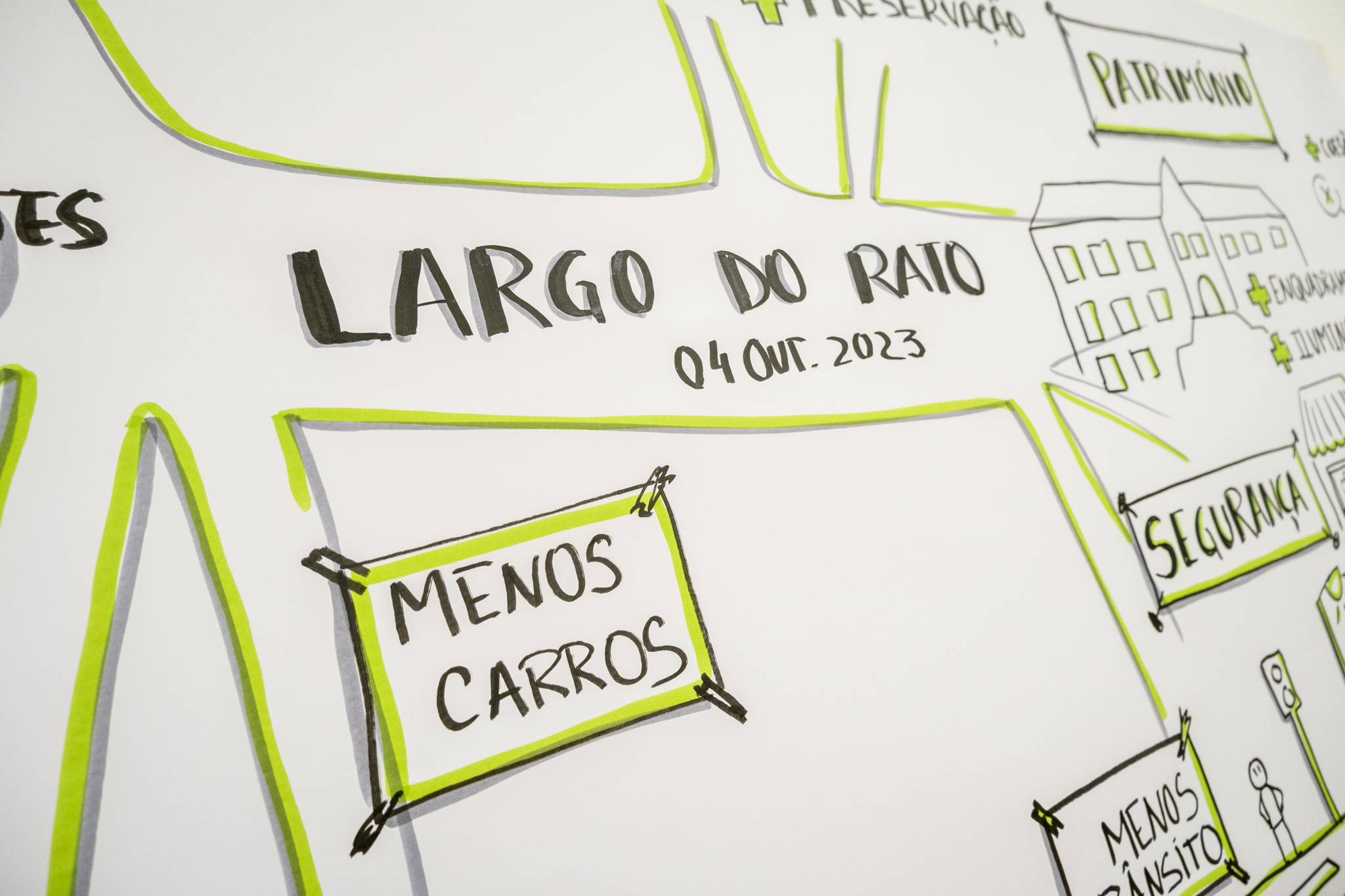
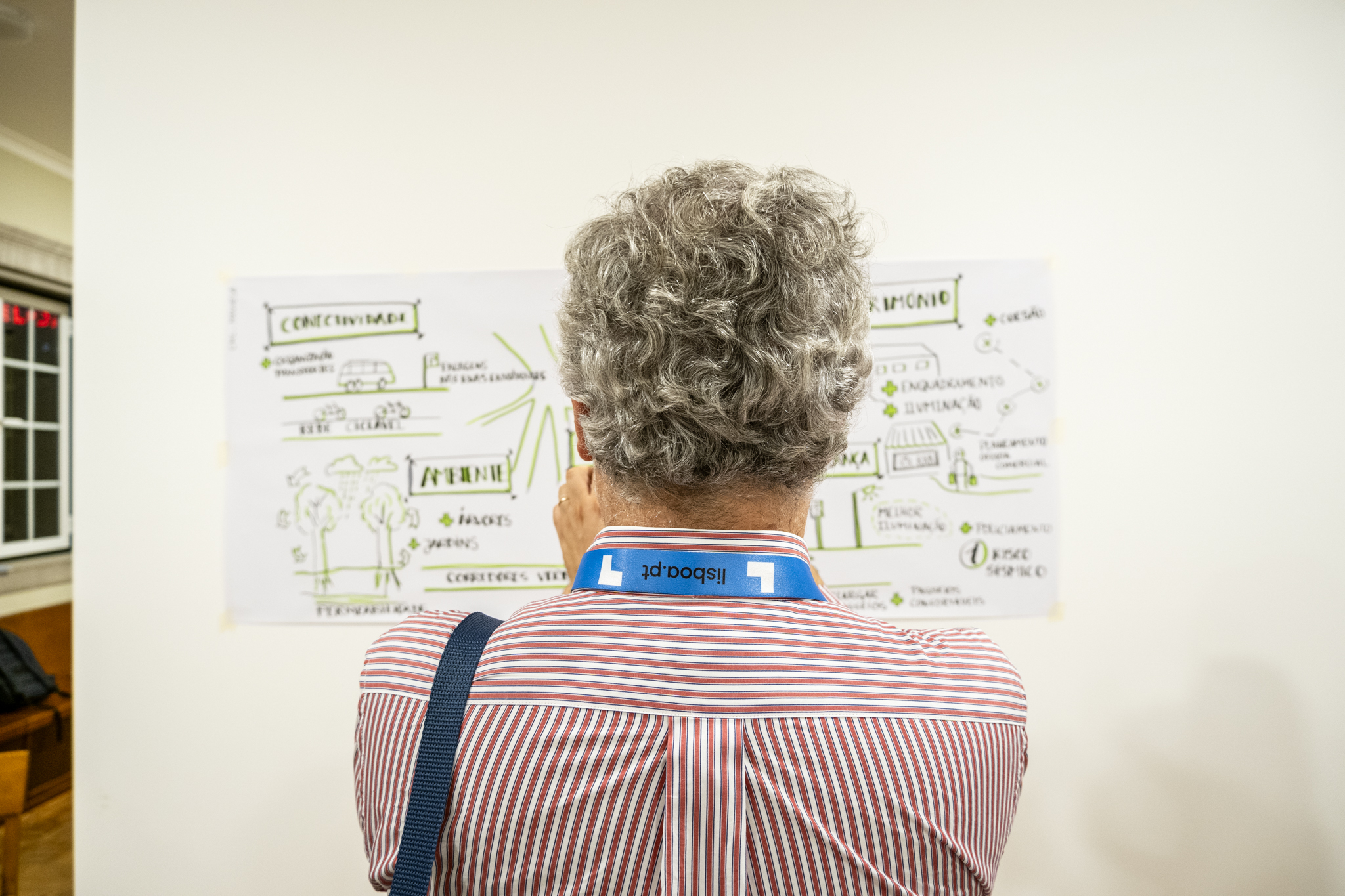
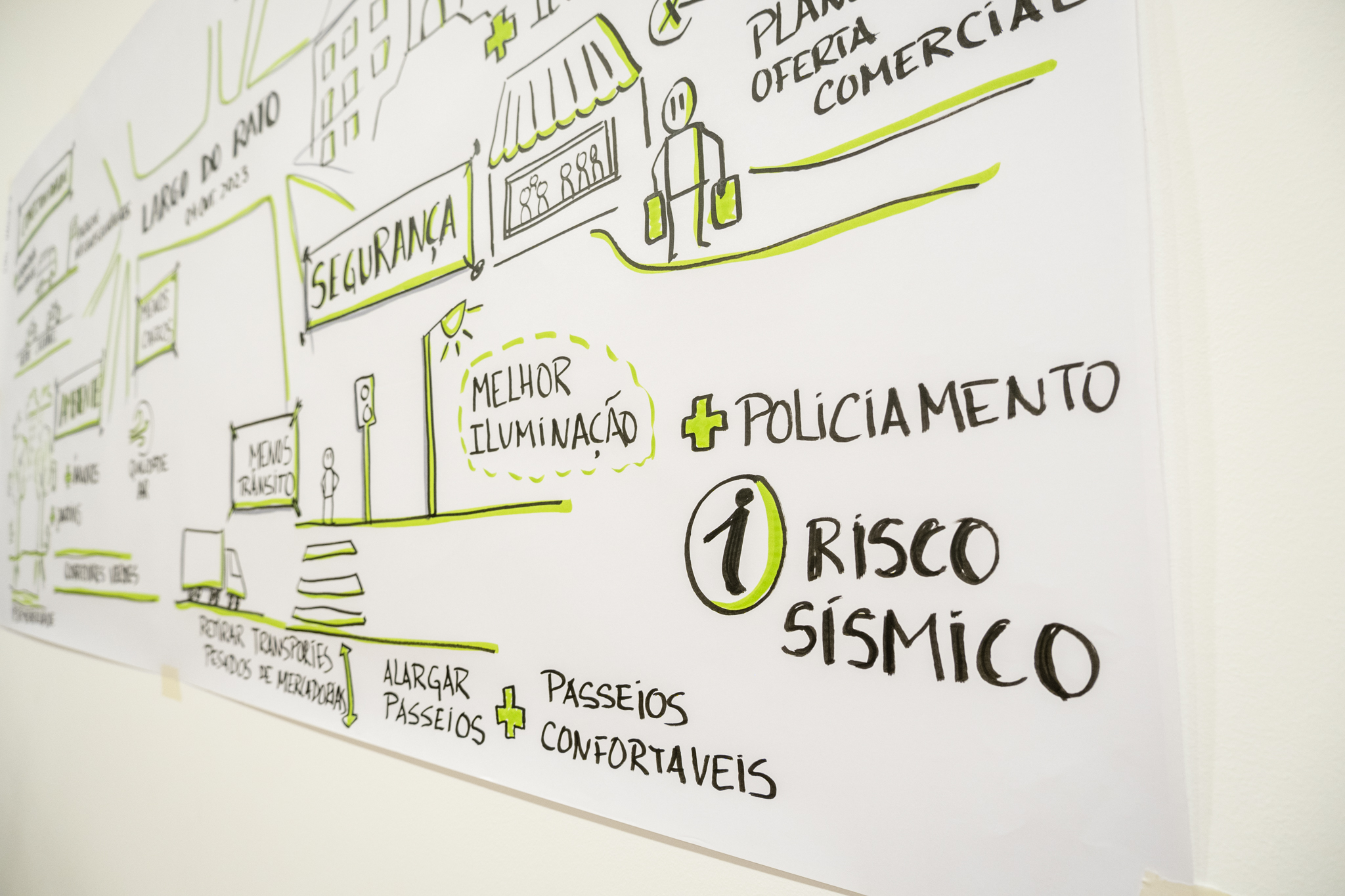
The Lisbon City Council has not scheduled any more initiatives as part of the participatory process for the redevelopment of Largo do Rato, and there should only be news at the end of this year or in 2024. Until then, the new ideas can be cross-referenced with the work that has already been done previously under the program A Square in Every Neighborhoodwhich we recover here. The municipality had told the newspaper Message from Lisbonin November 2022, that the requalification of Largo do Rato is "one of the priorities of the current executive, and as such, the intervention continues to be planned, outside the scope of the Uma Praça em Cada Bairro (A Square in Every Neighborhood) program".
Largo do Rato n'A Square in Every Neighborhood
SWOT analysis
Forces
- the existence of commercial fronts and public services;
- urban public transport interface with the terminus of the existing Metro line (Yellow);
- symbolic charge of space;
- strong attractiveness due to its strategic position in the distribution of road, transport and pedestrian networks;
- architectural value of its built fronts with different scales and functions, which enrich the site.
- as the gateway to the city's historic center;
- is part of the city's structuring pedestrian network.
Weaknesses
- very demarcated road presence creating incompatibility in pedestrian crossing;
- lack of seating areas, resulting in a lack of street furniture and trees;
- the presence of physical barriers (walls and railings) that cut off the spatial reading of the square;
- no bicycle lanes and no furniture for parking bicycles;
- topography of the square.
Opportunities
- enhancing the urban public transport interface (Carris, Metro) with the connection to the CP line through the Mercado do Rato urban project.
Threats
- excessive weight of the urban public transport interface (Carris, Metro);
- heavy road load.
Main lines of action
- widening the southern promenade of the Largo, next to the shopping area, giving it more room for visitors;
- to provide this space with a new tree structure that will encourage visitors to stay and increase the number of terrace areas;
- articulate this intervention with existing projects in the area of pedestrian accessibility;
- promote the integration of soft mobility by integrating it into a new 7th Hill network;
- making the proposed public space compatible with the replacement of the tramway, taking advantage of the existing infrastructure wherever possible;
- road traffic study of the entire surrounding area with the introduction of measures to enable the implementation of the proposal;
- implement a road traffic system that allows reversing directions in all directions (explore the possibility of a traffic circle);
- accentuate the focal axis of the Church of Nossa Senhora da Conceição (via Rua Alexandre Herculano/Rua do Salitre) and Avenida Álvares Cabral;
- improve and make safer the pedestrian crossing of the Largo through new pedestrian routes;
- remove the parking lot in front of the Church of Nossa Senhora da Conceição, introducing street furniture that encourages visitors to stay;
- to draw up a façade study for the southern front of the square, through a study of the height and a new color palette to enhance the more heterogeneous front of the square, focusing on the commercial first floors;
- drawing up a program to support the rehabilitation of properties located in the square;
- implementation of the first floor program as a way of reconverting and diversifying the existing commercial offer.
Public Participation
It took place online between January and February 2015 and had these suggestions:
- the need to increase the pedestrian area and define areas for leisure activities with suitable street furniture, kiosks, terraces, etc;
- the urgent need to adapt sidewalks for people with reduced mobility and improve the public lighting system;
- the introduction of artistic interventions in the public space and the recovery/enhancement of the Largo do Rato fountain;
- strengthening the connection between the various public transport services;
- creating conditions in the square for bicycles and reinstating the streetcar line.
- reorganize and simplify road traffic, reducing the space dedicated to individual transport;
- introduce measures to reduce vehicle speeds;
- ensure obstacle-free pedestrian routes;
- improve safety conditions and waiting times when crossing the square;
- optimize transport access routes;
- eliminating abusive parking and reserving areas for loading and unloading.
- he introduction of green areas and afforestation in Largo do Rato was identified as fundamental to improving the quality of the public space.

